Strengthen Your Students’ Critical Thinking Skills by Playing Art Detective
We all know that Critical Thinking is a vital 21st Century Skill for our students. However, sometimes it’s difficult to think about presenting the concept to very young students. The good news is that with a little imagination, anything is possible. Today I’m sharing a simple activity you can use with your youngest students to begin to develop their critical thinkings skills.

The activity is called Art Detective and is super simple to pull off.
It would be perfect for an introduction to a project or theme, or an excellent option to pull out when you have 15 extra minutes of class. Here’s how to do it.
Help your students become art detectives.
1. get into costume..
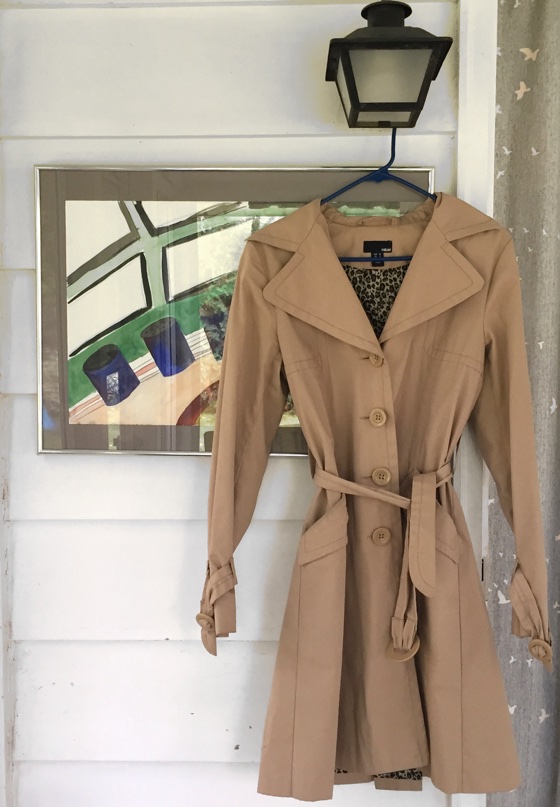
2. Choose a piece of art for students to “investigate.”
If you’re using this as an introduction to a project or theme, you may want to use a specific piece of art. Most likely, your choice will only be available in poster form. However, if you’re doing this activity outside of a specific project, why not bring in a real, physical piece of art? This could be a painting you’ve done (don’t tell them!), a piece of work done by a high school student in your district, or something you have hanging in your home. There is something about a real piece of art that truly engages students. In addition, don’t feel as though you have to limit your choices to 2D works. Ceramic pieces, sculptures, weavings, and artifacts also all work well. In fact, if you don’t know anything about the piece yourself, it can lead to a much more authentic discussion.
3. Set the stage.
Explain the premise of the activity: You have just discovered the piece of art you are holding (or showing) and you have no idea what it is or what it’s about. You need the students help to figure it out!
4. Guide the discussion without judgment.
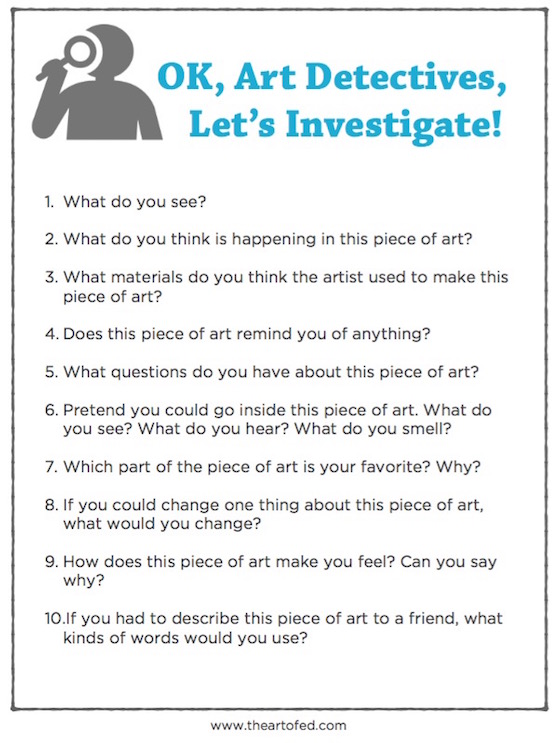
If students are coming to different conclusions than the artist or different conclusions than you, it’s OK! Ask follow-up questions to reveal their thought processes. “What makes you think the person feels angry?” or “What about the picture makes you think it was made with fabric?” are two examples of these types of questions. I guarantee you will be blown away by their ideas and insights.
The beauty of this activity is that just by participating, students are developing critical thinking skills. The NEA has a helpful document available for download called “ An Educator’s Guide to the ‘Four Cs’ ” which details how part of critical thinking is making judgments and decisions. Specifically, students should develop skills to “Effectively analyze and evaluate evidence, arguments, claims, and beliefs,” and, “Interpret information and draw conclusions based on the best analysis,” and finally, “Identify and ask significant questions that clarify various points of view and lead to better solutions.”
Over time, providing your students with opportunities like playing Art Detectives will do just that! For even more insight into helping students analyze art, check out the following articles and lesson plan.
- Slow Looking and 5 Other Simple Activities to Enhance Your Students’ Ability to Analyze Art
- Five Easy Steps for Talking with Children About Art (via Tinkerlab )
- Artists Analyze: Free Lesson Plan Download
How do you get young students to begin to think about artwork in a critical way?
Do you have any favorite art pieces for them to analyze?
Magazine articles and podcasts are opinions of professional education contributors and do not necessarily represent the position of the Art of Education University (AOEU) or its academic offerings. Contributors use terms in the way they are most often talked about in the scope of their educational experiences.

Amanda Heyn
Amanda Heyn is AOEU’s Director of Community Engagement and a former AOEU Writer and elementary art educator. She enjoys creating relevant and engaging professional development just for art teachers.
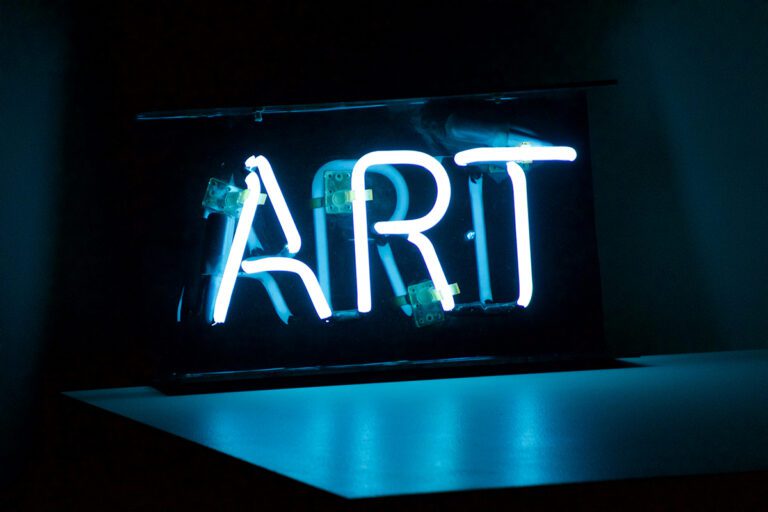
How to Engage Students on Day One by Redefining Art

Discover How to Teach Responsible Artificial Intelligence (AI) Use in the Art Room
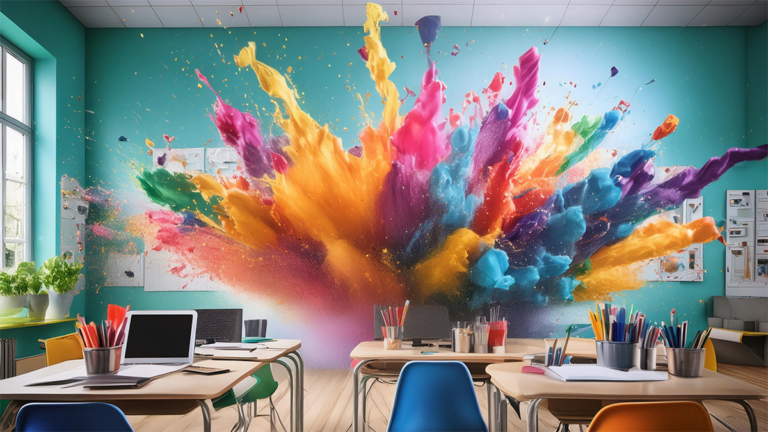
Ways AI Can Make Your Art Teacher Job Easier for Planning and Assessment
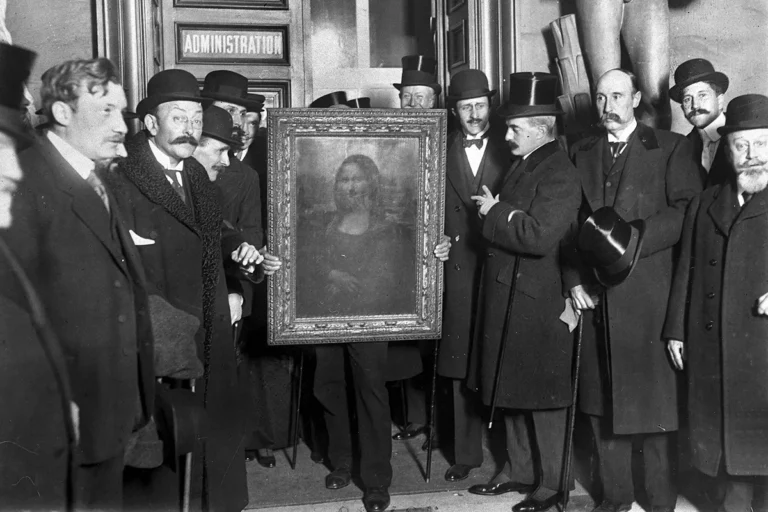
Daring Art Crimes for the Art Teacher That You Won’t Be Able to Put Down!
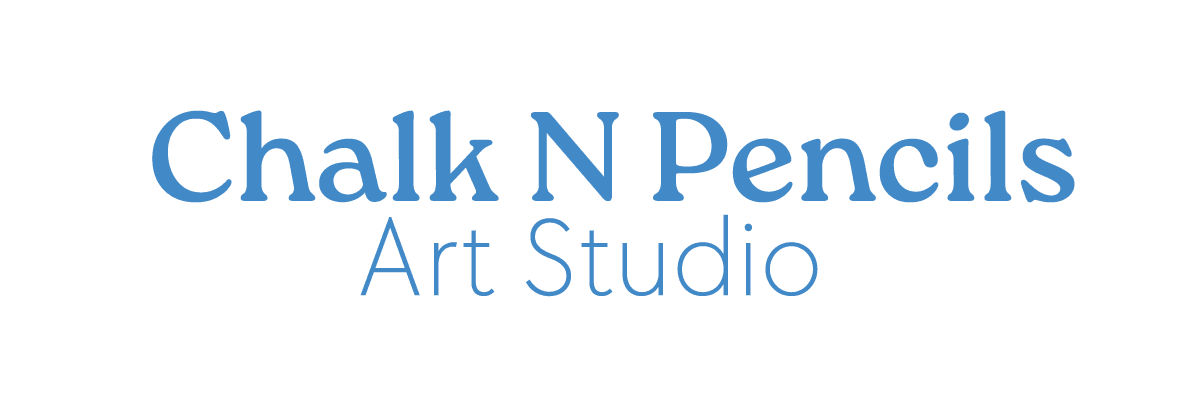
How to Use Art to Promote Critical Thinking in Children
by Miss Kheng | Aug 8, 2023 | Art for Child Development | 0 comments
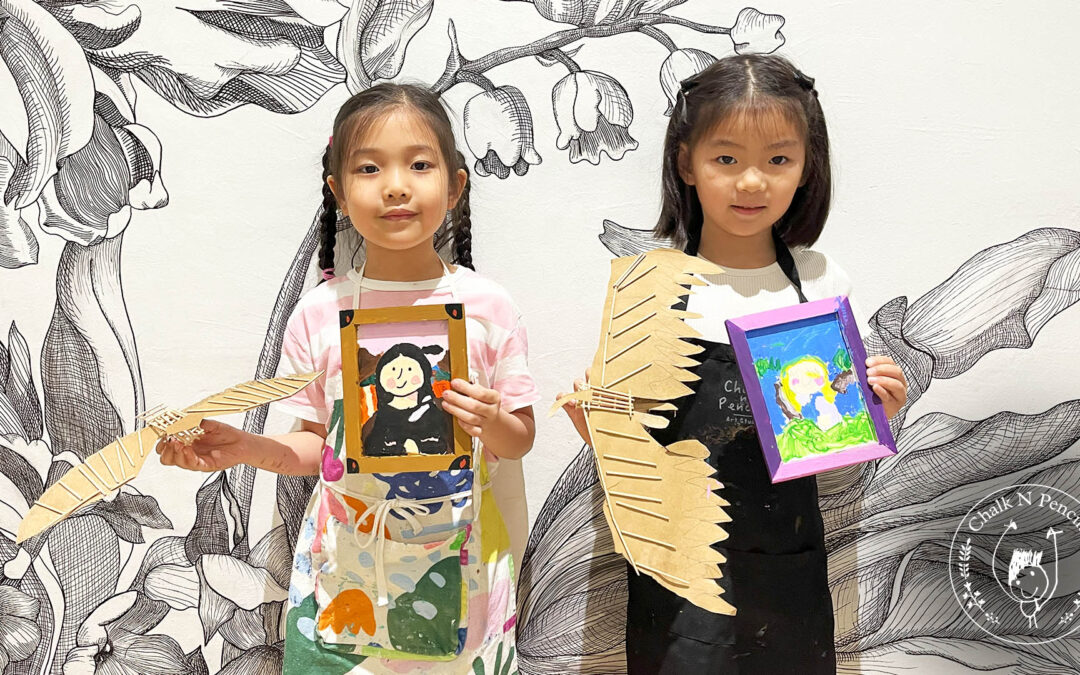
The Connection Between Art and Critical Thinking
How to encourage critical thinking through art, tips and strategies for parents.
- Encourage curiosity: Ask your child questions about their artwork. What were they trying to express? Why did they choose those colours? These questions can stimulate their critical thinking.
- Promote problem-solving: Give your child challenging art projects that require them to figure out how to achieve a specific effect or create a particular form.
- Foster decision-making: Let your child make decisions during their art projects. For instance, ask them what to draw instead of telling them what they want to draw.
- Cultivate observation skills: Encourage your child to observe art closely, whether it’s their own artwork, a piece in a museum, or a picture in a book. This can enhance their attention to detail, an essential aspect of critical thinking.
- Nurture open-mindedness: Encourage your child to explore different art styles and mediums. This exposure and knowledge can help them understand that there’s no single “right” way to create art, fostering open-mindedness.
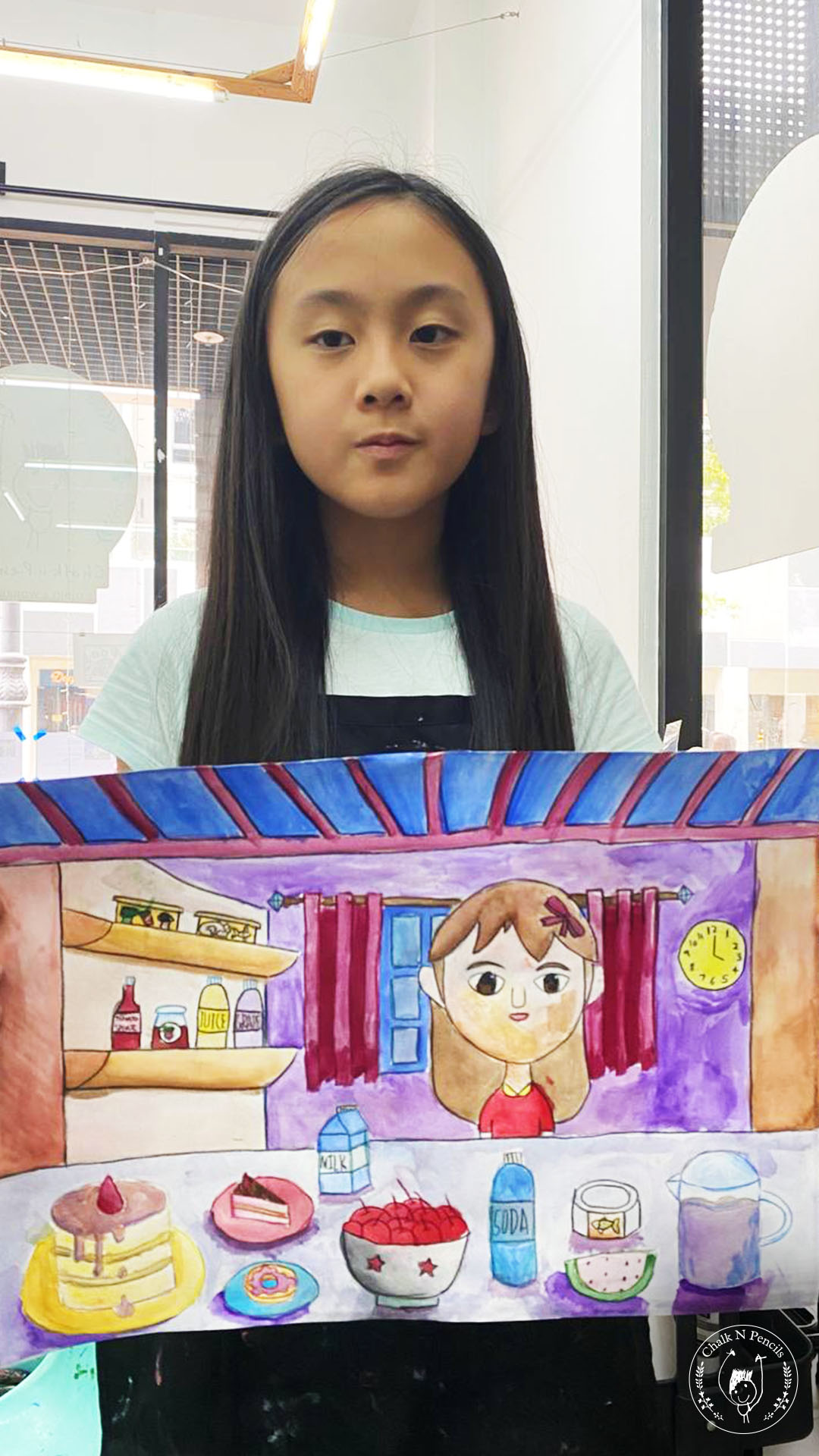
Practical Activities and Exercises
- Artful Thinking Routines: These routines, developed by Harvard’s Project Zero, involve observing, questioning, and interpreting art. They can help children think critically about art.
- Storytelling through Art: Have your child create a series of drawings to tell a story, promoting sequencing and logical thinking.
- Art Critique: Encourage your child to critique their own or others’ artwork and foster analytical thinking.
- Art Interpretation: Have your child interpret the meaning of a piece of art and enhance their inferential thinking.
- Art Creation Challenges: Give your child challenges that require them to create art with specific constraints and stimulate their problem-solving skills.
The Role of Art Classes in Developing Critical Thinking
The next step: booking a trial class.
If you want to take the next step in your child’s development, consider booking a trial class. This will allow your child to experience first-hand how art can promote critical thinking. You can book a trial class here .
During the trial class, your child will engage in various art activities to stimulate their critical thinking. They’ll also be able to interact with other children, further enhancing their learning experience.

Frequently Asked Questions
2. How does art education foster critical thinking? Art education fosters critical thinking by encouraging children to observe, interpret, and reflect on art. This process can enhance their attention to detail, an essential aspect of critical thinking. Moreover, art education often involves problem-solving tasks, which can further promote critical thinking.
3. How can art be used to teach critical thinking? Art can be used to teach critical thinking through activities that encourage observation, interpretation, and reflection. For instance, you can ask your child to describe what they see in a piece of art, to explain what they think it means, and to reflect on how it makes them feel. These activities can promote critical thinking skills.
4. How does art education impact a student’s critical thinking? Studies have shown that art education can positively impact a student’s critical thinking. In addition to improving their observation, interpretation, and reflection skills, art education can enhance other essential aspects of thought, such as problem-solving and decision-making.
Art is a powerful tool for promoting critical thinking in children. It encourages them to observe, question, interpret, and make decisions — all key components of critical thinking. By using the strategies and activities outlined in this article, parents can help their children develop this essential skill. So why not start today? Explore art with your child, and watch their critical thinking skills flourish.
Exclusive Offer for Our Readers!
$5 off a trial art class at Chalk N Pencils when you click through this link and send us a message on WhatsApp.

Join Our Community
Eager to start your artistic journey? Join our community of artists in Singapore today! Whether you're looking to learn, create, or simply enjoy the company of fellow art enthusiasts, Chalk N Pencils is the place to be.

Submit a Comment Cancel reply
Your email address will not be published. Required fields are marked *
Save my name, email, and website in this browser for the next time I comment.
Hi there, how can we help?
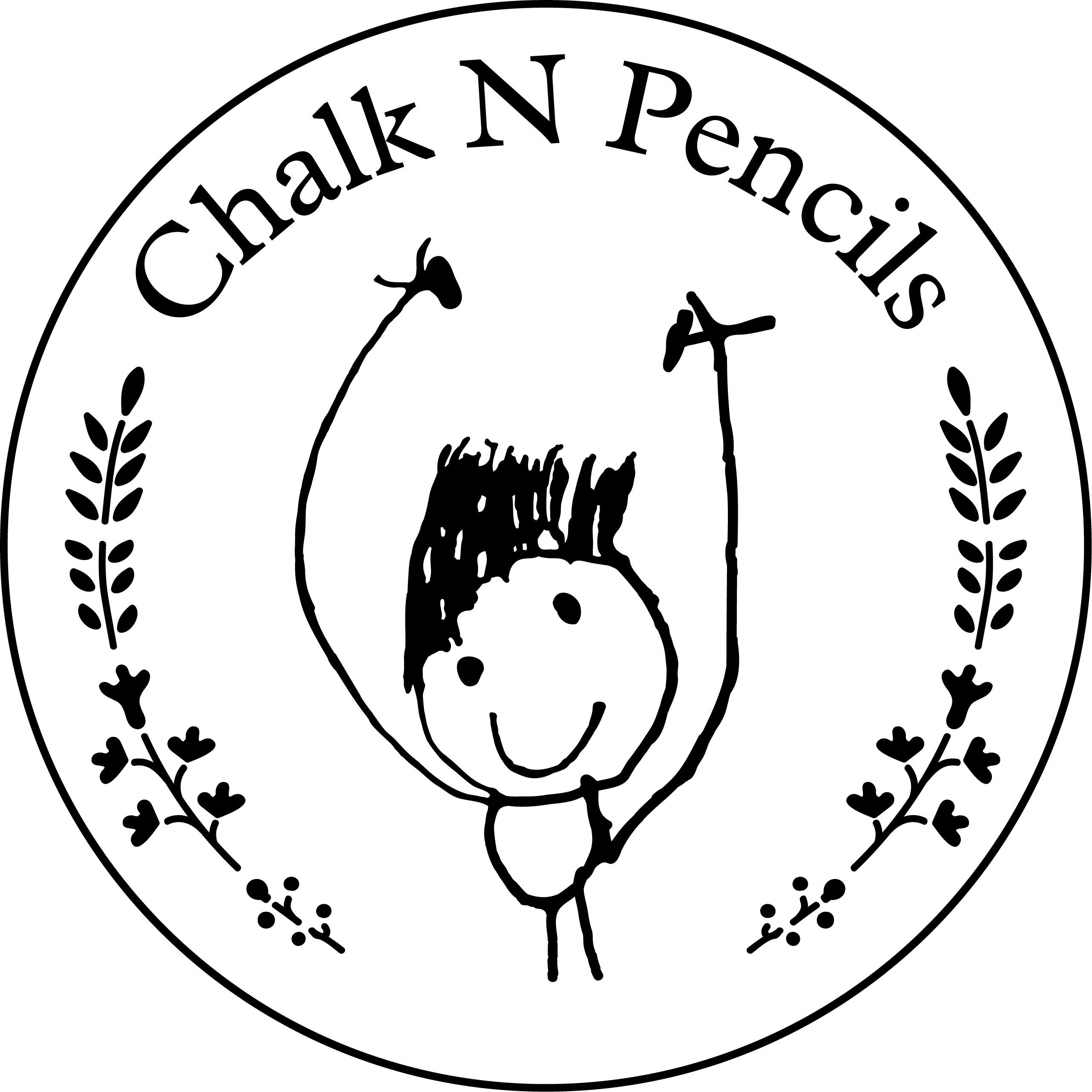
Click above to chat

Arts Academy
in the Woods
How Art Education Fosters Critical Thinking and Why It Matters

These days, the ability to grasp the logical connection between ideas is a necessary skill.
Unless you’re a hermit living in a cave, there is so much information coming at all of us at any given moment.
Being able to discern which information is of worth – and which is not based in reality – requires critical thinking.
So What Exactly Is Critical Thinking?
Critical thinking is often synonymous with reflective and independent thinking. It means knowing how to take in the data and then come to a reasonable conclusion.
Those who engage in critical thinking are constantly questioning ideas and assumptions rather than just accepting what’s being peddled to the masses.
Critical thinkers want to know that the incoming information is representative of the bigger picture. If they determine that it’s not, they’ll take the necessary measures to get that additional information.
Critical Thinking Versus Being Critical
Critical thinking is not the same thing as being argumentative or critical/judgmental of other people. Sure, critical thinking can expose errors or poor reasoning.
But it’s also crucial for cooperative reasoning and then moving toward constructive tasks. Because acquiring more knowledge improves and strengthens one’s theories and arguments. And this subsequently leads to enhanced work processes.
How Art Improves Critical Thinking
Because critical thinking tends to incorporate logical and rational thinking and veers from instinct, many people see it as a hinderance to creativity.
After all, creativity requires breaking the rules, right? (Well, yes and no .)
Still, critical thinking truly requires out-of-the-box thinking. Rather than just taking popular approaches and swallowing them whole, critical thinkers challenge the consensus. This means they often have to pursue less popular thoughts or approaches.
So if you think about, critical thinking is an absolutely necessary component of creativity. Without it, how can the creative person continue to evaluate and improve upon his or her ideas?

It’s this very process of observation and study that teaches students of the arts to more intensely observe and analyze the world. And it gives them the skills that build the foundation of critical thinking.
But Why Does It Matter?
You might think that if your path leads you to work in research, law, education, management, finance or medicine, then you’ll absolutely need this skill. And you’re right.
But no matter what you choose to do with your life, the ability to think clearly and rationally is important.
Knowing how to receive information, clearly consider it and then use it to systematically solve problems is an asset for any career. Especially in light of this new knowledge economy. To be successful in such an economy requires one to able to handle changes quickly and effectively.
There is an increased demand for workers to be able to analyze a lot of information from diverse sources, then integrate it in order to find solutions. Critical thinking promotes these skills.
It also enhances language and presentation skills. The simple act of learning to think in a more systematic and logical fashion can also improve the way one expresses ideas.
Furthermore, in having to analyze the structure of different information sources, critical thinking also improves one’s ability to comprehend.
And as we mentioned above, critical thinking actually promotes creativity. Coming up with creative solutions is more than just having new ideas. There has to be an understanding that the new ideas are useful and relevant to the required task. Critical thinking plays an important role in this.

That’s right. Critical thinking is even important for this. It’s nearly impossible to structure a meaningful life without the ability to justify and reflect on our own values and decisions. And critical thinking provides the tools for this process.
So yeah, it’s safe to say that critical thinking definitely matters.
Learning Critical Thinking with an Arts Integration Education
Arts integration education merges the important skill of critical thinking achieved through art education and blends it in with academics.
There’s no disputing the importance of STEM. The above mentioned knowledge economy requires students to understand facets of science, technology, engineering and math.
With arts integration though, there’s the added importance of art – hence the term STEAM. Arts integration isn’t looking to bypass STEM. It strives instead to create an integrated program that includes all of those, while teaching the application of skills learned through the arts – such as critical thinking.
Arts integration helps students see the world from multiple angles, and to take a design-thinking approach in finding solutions.
Teaching young people to be careful and deliberate observers can go miles toward expanding their worldview. And this, in turn, can create a stronger democracy.
Do You Want to Explore An Arts Integration Education?

So take a look at what our students have to say . And/or request a tour of our school and see what we have to offer.
Then get ready to put those critical thinking skills toward a higher purpose.
News Categories
- Art Integrated Education
- Daily Announcements
- Commitment to Diversity & Justice
- Land Acknowledgement
- PZ Doctoral Fellows
- Our First 50 Years
- Art & Aesthetics
- Assessment, Evaluation & Documentation
- Civic Engagement
- Cognition, Thinking & Understanding
- Collaboration & Group Learning
- Digital Life & Learning
- Disciplinary & Interdisciplinary Studies
- Ethics at Work
- Global & Cultural Understanding
- Humanities & Liberal Arts
- Leadership & Organizational Learning
- Learning Environments
- Making & Design
- Science Learning
- Early Childhood
- Primary / Elementary School
- Secondary / High School
- Higher Education
- Adult & Lifelong Learning
- Organizational Learning
- Agency by Design
Artful Thinking
- Arts as Civic Commons
- Causal Learning Projects
- Center for Digital Thriving
- Citizen-Learners: A 21st Century Curriculum and Professional Development Framework
- Creando Comunidades de Indagación (Creating Communities of Inquiry)
- Creating Communities of Innovation
- Cultivating Creative & Civic Capacities
- Cultures of Thinking
- EcoLEARN Projects
- Educating with Digital Dilemmas
- Envisioning Innovation in Education
- Global Children
- Growing Up to Shape Our Place in the World
- Higher Education in the 21st Century
- Humanities and the Liberal Arts Assessment (HULA)
- Idea Into Action
- Implementation of The Good Project Lesson Plans
- Inspiring Agents of Change
- Interdisciplinary & Global Studies
- Investigating Impacts of Educational Experiences
- JusticexDesign
- Leadership Education and Playful Pedagogy (LEaPP)
- Leading Learning that Matters
- Learning Innovations Laboratory
- Learning Outside-In
- Making Ethics Central to the College Experience
- Making Learning Visible
- Multiple Intelligences
- Navigating Workplace Changes
- Next Level Lab
- Out of Eden Learn
- Pedagogy of Play
- Reimagining Digital Well-being
- Reimagining Early Childhood Education
- Re-imagining Migration
- Signature Pedagogies in Global Education
- Talking With Artists Who Teach
- Teaching for Understanding
- The Good Project
- The Good Starts Project
- The Studio Thinking Project
- The World in DC
- Transformative Repair
- Visible Thinking
- Witness Tree: Ambassador for Life in a Changing Environment
- View All Projects
- At Home with PZ
- Thinking Routine Toolbox
- Zero In Newsletters
- View All Resources
- Professional Development
Search form
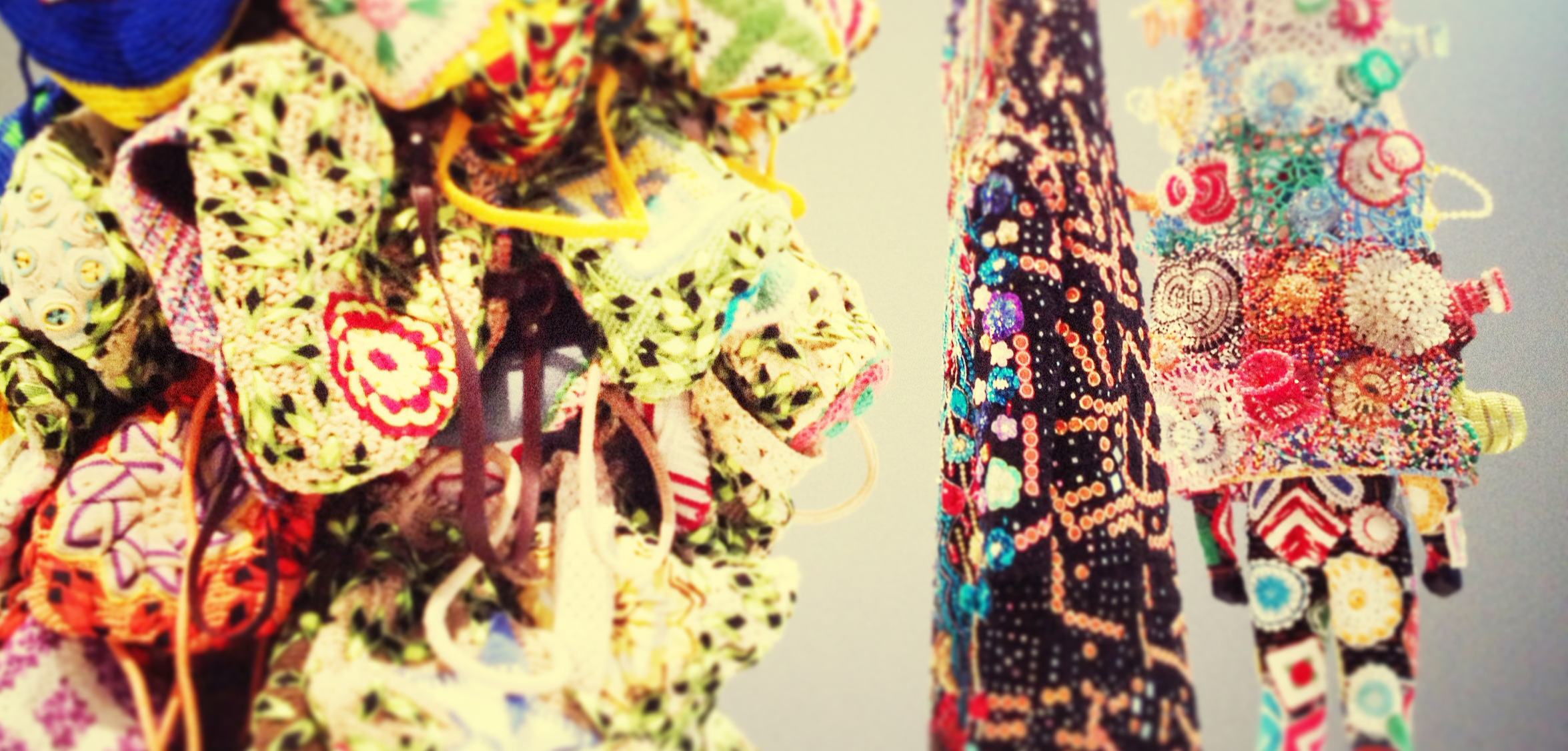
You are here
Focus on experiencing and appreciating art as a way to help students develop ways of thinking that support thoughtful learning.
Artful Thinking helps teachers use works of visual art and music in ways that strengthen student thinking and learning in the arts and beyond. The goals of this program are to help teachers create connections between works of art and the curriculum, and to help teachers use art as a force for developing students’ thinking dispositions. Using the artist's palette as a central metaphor, the Artful Thinking "palette" is comprised of six thinking dispositions which strengthen students' intellectual behaviors. These dispositions are developed through Thinking Routines, which are easy to learn and can deepen students' thinking in the classroom.

Project Info

Shari Tishman

Patricia Palmer
Related resources.
- View all Artful Thinking resources -
- Privacy Policy
- Harvard Graduate School of Education
- Harvard University
- Digital Accessibility Policy
Copyright 2022 President and Fellows of Harvard College | Harvard Graduate School of Education
Subscribe to Our Mailing List
Email Address
By submitting this form, you are granting: Project Zero, 13 Appian Way, Cambridge, Massachusetts, 02138, United States, http://www.pz.gse.harvard.edu permission to email you. You may unsubscribe via the link found at the bottom of every email. (See our Email Privacy Policy for details.) Emails are serviced by Constant Contact.
Find Lessons
Online Courses
Explore Resources
School Tours & Programs
Professional Development
Teaching Complex Thinking through Art with the National Gallery of Art
Since it launched in 2019, teachers around the world have shared how transformative the National Gallery’s first online course, Teaching Critical Thinking through Art, has been for them. Now in 2024, we’re excited to offer you a second course on the edX platform:
Teaching Complex Thinking through Art
The strategies presented in this course are adapted from Artful Thinking pedagogy developed by Project Zero at the Harvard Graduate School of Education and applied in programs at the National Gallery. Artful Thinking research discovered that six thinking dispositions can be strengthened by engaging with art.
The first course covered three of these dispositions: observing and describing, reasoning with evidence, and questioning and investigating. Our second course explores the other three:
- Comparing and connecting: making comparisons between different works of art and connections to oneself, curriculum content, and larger issues in society
- Exploring viewpoints: examining the perspectives of figures in a work of art with self-awareness, respect, and empathy
- Finding complexity: going beyond the surface of a work of art to consider its parts, purposes, and complexities
A fourth unit focuses on documenting and assessing your current thinking to help you and your students develop more complex thought about art and other topics. The course features live-action lesson videos of real teachers facilitating authentic, respectful dialogue about art with students of various grade levels in math, science, social studies, language arts, and visual arts. Working in classrooms and at the museum, they demonstrate a thinking routine—a strategy of open-ended questions centered around a thinking disposition.
You’ll explore artworks for yourself, grappling with complex topics. You’ll hear from Harvard researchers about the benefits and challenges of teaching different facets of complex thinking through art. And you’ll be part of a global learning community in which you can document, share, and reflect on your experience integrating art and developing complex thinking with your students.
To practice what you learn in the course, you will be able to access a suite of downloadable teaching resources for your classroom, such as thinking routine instructions, templates, lesson plans, and slide decks of art images. No matter what subject or level you teach, you’ll find lessons and resources that relate to your practice.
Register today at www.edX.org .
These online courses for teachers, produced by the National Gallery of Art, are made possible by generous grants from the Ruth S. Willoughby Foundation and J. Bruce and Alice Whelihan. Special thanks to J. Bruce Whelihan, trustee of the Willoughby Foundation.
Teaching Critical Thinking through Art with the National Gallery of Art
Based on the National Gallery of Art’s popular Art Around the Corner professional development program for teachers in Washington, D.C., this five-part, self-paced online course provides everything you need to begin creating a culture of critical thinking and collaboration for any classroom, subject, or level. You do not need an art background or museum access to successfully integrate the “Artful Thinking” course materials into your teaching. Your focused attention, willingness to experiment, and commitment to trying new discussion practices with your students is all that is required.
Teaching Critical Thinking through Art
What You Will Learn:
- How to use Artful Thinking Routines to strengthen thinking.
- How to facilitate meaningful conversations in your classroom using art for both artful learning and artful teaching.
- How to help learners of all levels develop more discerning descriptions, evidence-based reasoning, and meaningful questioning habits.
- Key strategies for using content information to push original thinking deeper.
- Exciting, immersive activities for any type of classroom.
- How to use learning resources from the National Gallery of Art, including downloadable Artful Thinking lesson plans.
The strategies presented in this course are adapted from Artful Thinking pedagogy, developed by Project Zero at the Harvard Graduate School of Education.
When you enroll, all the resources you need to strengthen critical thinking skills with art will be immediately available. We recommend that you spend a few hours learning and practicing each section before progressing to the next. The online course environment features over 20 videos and interactive tools: including a zoom tool to examine works of art at full resolution, polls to compare your thoughts with those of other participants, and discussion boards where teachers around the world will share ideas, plans, and results. Authentic lesson demonstration videos model routines led by real classroom and museum educators with students of varying ages. Interview videos provide focal points for teachers on topics like using thinking routines with emerging language learners and making accommodations for all learners. Having access to a global network of educators who, just like you, want to hone their abilities to teach critical thinking skills will be an added and enduring bonus to your course experience.
Register at www.edX.org .
This NGA Online Course is made possible by a generous grant from the Ruth S. Willoughby Foundation. Additional funding is provided by Mr. and Mrs. J. Bruce Whelihan.
Join thousands of participants from over 130 countries. Register today at www.edX.org .
Questions about this program should be directed to [email protected] . When contacting the Gallery, please provide a telephone number and the times of day when you can best be reached.
View and share our course videos
- Our Mission
Using Art to Teach Critical Thinking

Art is one of the most underutilized resources in today’s ELA classroom. The Roman poet Horace claimed, “A picture is a poem without words” meaning art and written word are different mediums of expression. Art offers students a break from written words while continuing to develop the same skill set needed to be successful readers through challenging students to think both critically and analytically.
Here are a few examples of how I use art:
1. Nighthawks by Hopper
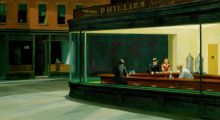
Nighthawks by Hopper is analyzed to introduce the modern period. I give students time on their own to study the painting analyzing color, lines, and shapes and then use this discussion to determine mood and tone. If time allows, students write dialogue between the characters. Their only instruction is the dialogue will serve as characterization of one of the subjects in the painting and must match their prior analysis of the picture as a whole.
2. Marriage a la Mode: The Marriage Settlement by Hogarth
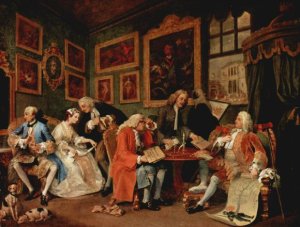
Marriage a la Mode: The Marriage Settlement by Hogarth is shown after a satire unit composed of short pieces and videos. Students work in groups to identify the satirical elements of the painting and how they are characteristic of the time period. I am always amazed at what my students see in this painting such as the groom looking at himself in the mirror, the bride and groom uninvolved in the contract, the dogs chained together, etc. We can easily spend an entire class period talking about this painting which leads perfectly into Pride and Prejudice. The painting is then revisited after reading Pride and Prejudice, where students always have further insight. Student groups then compose their own satirical picture based on a passage in Pride and Prejudice using Marriage a la Mode: The Marriage Settlement as a model. Like me, you will be completely blown away by what students produce.
3. Impression, Sunrise by Monet and A Sunday Afternoon on the Island of La Grande Jatte by Seurat
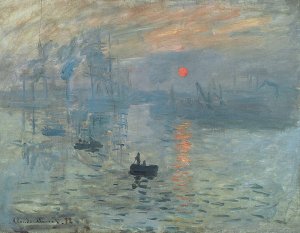
Students often have a difficult time grasping the ambiguity in Heart of Darkness and why Conrad would use this style when writing. I often pair this novel with Sunrise by Monet or A Sunday Afternoon on the Island of La Grande Jatte by Seurat. Both of the pieces are very difficult to view and understand when looking up close but make sense by stepping back and looking at the piece as a whole. We spend time discussing why an artist would create a piece that is confusing up close but that makes sense when seen as a whole. The same is true with Heart of Darkness , and when students are confused or bogged down by passages in the novel, I remind them to step back and view the passage in light of the novel as a whole.
4. The Scream by Munch

Art is a great tool to work on sentence style and variety. Instead of rote grammar lessons, we use art as an inspiration piece and write sentences based on the work. Typically, we use the same image for a week as I prompt students to write a sentence about the piece with a participle phrase, an adjective clause, an introductory adverb clause. Sometimes I prompt them to review sentence types such as periodic sentences or the overlooked but powerful simple sentence. One of our favorite pieces to use for this activity is Scream by Munch because students love writing bizarre explanations for the subject.
5. Collages
Students can collect art for a culminating project. Through digital displays, students are able to share with the class a collection of pieces that they feel best captures units, time periods, or novels we have studied during the year. I often ask them to pair the pieces with either quotes and defend why the piece was chosen.
Just like reading and writing, allow ample time to view a piece; analyzing art takes time. Offer guiding questions or thematic suggestions as a lens for students to use with viewing, while they are still getting use to art analysis. Also give students opportunities to view pieces without a specific focus though. The possibilities are limitless, and you and your students will reap the reward.
This piece was originally submitted to our community forums by a reader. Due to audience interest, we’ve preserved it. The opinions expressed here are the writer’s own.
Educationise
11 Activities That Promote Critical Thinking In The Class
Ignite your child’s curiosity with our exclusive “Learning Adventures Activity Workbook for Kids” a perfect blend of education and adventure!
Critical thinking activities encourage individuals to analyze, evaluate, and synthesize information to develop informed opinions and make reasoned decisions. Engaging in such exercises cultivates intellectual agility, fostering a deeper understanding of complex issues and honing problem-solving skills for navigating an increasingly intricate world.
Through critical thinking, individuals empower themselves to challenge assumptions, uncover biases, and constructively contribute to discourse, thereby enriching both personal growth and societal progress.
Critical thinking serves as the cornerstone of effective problem-solving, enabling individuals to dissect challenges, explore diverse perspectives, and devise innovative solutions grounded in logic and evidence. For engaging problem solving activities, read our article problem solving activities that enhance student’s interest.
52 Critical Thinking Flashcards for Problem Solving
What is Critical Thinking?
Critical thinking is a 21st-century skill that enables a person to think rationally and logically in order to reach a plausible conclusion. A critical thinker assesses facts and figures and data objectively and determines what to believe and what not to believe. Critical thinking skills empower a person to decipher complex problems and make impartial and better decisions based on effective information.
More Articles from Educationise
- 10 Innovative Strategies for Promoting Critical Thinking in the Classroom
- How to Foster Critical Thinking Skills in Students? Creative Strategies and Real-World Examples
- 9 Must-Have AI Tools for Teachers to Create Interactive Learning Materials
- The Future of Education: 8 Predictions for the Next Decade
- The Latest in EdTech: 5 Innovative Tools and Technologies for the Classroom
- 8 Free Math Problem Solving Websites and Applications
Importance of Acquiring Critical Thinking Skills
Critical thinking skills cultivate habits of mind such as strategic thinking, skepticism, discerning fallacy from the facts, asking good questions and probing deep into the issues to find the truth. Acquiring critical thinking skills was never as valuable as it is today because of the prevalence of the modern knowledge economy.
Today, information and technology are the driving forces behind the global economy. To keep pace with ever-changing technology and new inventions, one has to be flexible enough to embrace changes swiftly.
Today critical thinking skills are one of the most sought-after skills by the companies. In fact, critical thinking skills are paramount not only for active learning and academic achievement but also for the professional career of the students.
The lack of critical thinking skills catalyzes memorization of the topics without a deeper insight, egocentrism, closed-mindedness, reduced student interest in the classroom and not being able to make timely and better decisions.
Incorporating critical thinking lessons into the curriculum equips students with the tools they need to navigate the complexities of the modern world, fostering a mindset that is adaptable, inquisitive, and capable of discerning truth from misinformation.
Benefits of Critical Thinking for Students
Certain strategies are more eloquent than others in teaching students how to think critically. Encouraging critical thinking in the classroom is indispensable for the learning and growth of the students. In this way, we can raise a generation of innovators and thinkers rather than followers. Some of the benefits offered by thinking critically in the classroom are given below:
- It allows a student to decipher problems and think through the situations in a disciplined and systematic manner
- Through a critical thinking ability, a student can comprehend the logical correlation between distinct ideas
- The student is able to rethink and re-justify his beliefs and ideas based on facts and figures
- Critical thinking skills make the students curious about things around them
- A student who is a critical thinker is creative and always strives to come up with out of the box solutions to intricate problems
Read our article: How to Foster Critical Thinking Skills in Students? Creative Strategies and Real-World Examples
- Critical thinking skills assist in the enhanced student learning experience in the classroom and prepares the students for lifelong learning and success
- The critical thinking process is the foundation of new discoveries and inventions in the world of science and technology
- The ability to think critically allows the students to think intellectually and enhances their presentation skills, hence they can convey their ideas and thoughts in a logical and convincing manner
- Critical thinking skills make students a terrific communicator because they have logical reasons behind their ideas
Critical Thinking Lessons and Activities
11 Activities that Promote Critical Thinking in the Class
We have compiled a list of 11 critical thinking activities for students that will facilitate you to promote critical thinking abilities in the students. By incorporating these activities, educators can introduce real-world examples of critical thinking in the classroom, empowering students to apply these skills in everyday situations.
We have also covered problem solving activities that enhance student’s interest in our another article. Click here to read it.
1. Worst Case Scenario
Divide students into teams and introduce each team with a hypothetical challenging scenario. Allocate minimum resources and time to each team and ask them to reach a viable conclusion using those resources.
The scenarios can include situations like stranded on an island or stuck in a forest. Students will come up with creative solutions to come out from the imaginary problematic situation they are encountering. Besides encouraging students to think critically, this activity will enhance teamwork, communication and problem-solving skills of the students.
This critical thinking activity not only pushes students to devise innovative solutions in challenging scenarios but also strengthens their teamwork, communication, and problem-solving abilities, making it an engaging and educational experience.
Read our article: 10 Innovative Strategies for Promoting Critical Thinking in the Classroom
2. If You Build It
It is a very flexible game that allows students to think creatively. To start this activity, divide students into groups. Give each group a limited amount of resources such as pipe cleaners, blocks, and marshmallows etc.
Every group is supposed to use these resources and construct a certain item such as building, tower or a bridge in a limited time. You can use a variety of materials in the classroom to challenge the students. This activity is helpful in promoting teamwork and creative skills among the students.
Incorporating critical thinking games like this into your classroom not only promotes teamwork and creativity but also challenges students to think outside the box as they work together to build their structures.
It is also one of the classics which can be used in the classroom to encourage critical thinking. Print pictures of objects, animals or concepts and start by telling a unique story about the printed picture. The next student is supposed to continue the story and pass the picture to the other student and so on.
This engaging exercise is one of the most effective critical thinking activities for kids, as it encourages them to use their creativity and problem-solving skills while working together to construct innovative structures with limited resources.
4. Keeping it Real
In this activity, you can ask students to identify a real-world problem in their schools, community or city. After the problem is recognized, students should work in teams to come up with the best possible outcome of that problem.
5. Save the Egg
Make groups of three or four in the class. Ask them to drop an egg from a certain height and think of creative ideas to save the egg from breaking. Students can come up with diverse ideas to conserve the egg like a soft-landing material or any other device. Remember that this activity can get chaotic, so select the area in the school that can be cleaned easily afterward and where there are no chances of damaging the school property.
6. Start a Debate
In this activity, the teacher can act as a facilitator and spark an interesting conversation in the class on any given topic. Give a small introductory speech on an open-ended topic. The topic can be related to current affairs, technological development or a new discovery in the field of science. Encourage students to participate in the debate by expressing their views and ideas on the topic. Conclude the debate with a viable solution or fresh ideas generated during the activity through brainstorming.
7. Create and Invent
This project-based learning activity is best for teaching in the engineering class. Divide students into groups. Present a problem to the students and ask them to build a model or simulate a product using computer animations or graphics that will solve the problem. After students are done with building models, each group is supposed to explain their proposed product to the rest of the class. The primary objective of this activity is to promote creative thinking and problem-solving skills among the students.
8. Select from Alternatives
This activity can be used in computer science, engineering or any of the STEM (Science, Technology, Engineering, Mathematics) classes. Introduce a variety of alternatives such as different formulas for solving the same problem, different computer codes, product designs or distinct explanations of the same topic.
Form groups in the class and ask them to select the best alternative. Each group will then explain its chosen alternative to the rest of the class with reasonable justification of its preference. During the process, the rest of the class can participate by asking questions from the group. This activity is very helpful in nurturing logical thinking and analytical skills among the students.
9. Reading and Critiquing
Present an article from a journal related to any topic that you are teaching. Ask the students to read the article critically and evaluate strengths and weaknesses in the article. Students can write about what they think about the article, any misleading statement or biases of the author and critique it by using their own judgments.
In this way, students can challenge the fallacies and rationality of judgments in the article. Hence, they can use their own thinking to come up with novel ideas pertaining to the topic.
10. Think Pair Share
In this activity, students will come up with their own questions. Make pairs or groups in the class and ask the students to discuss the questions together. The activity will be useful if the teacher gives students a topic on which the question should be based.
For example, if the teacher is teaching biology, the questions of the students can be based on reverse osmosis, human heart, respiratory system and so on. This activity drives student engagement and supports higher-order thinking skills among students.
11. Big Paper – Silent Conversation
Silence is a great way to slow down thinking and promote deep reflection on any subject. Present a driving question to the students and divide them into groups. The students will discuss the question with their teammates and brainstorm their ideas on a big paper.
After reflection and discussion, students can write their findings in silence. This is a great learning activity for students who are introverts and love to ruminate silently rather than thinking aloud.
Incorporating critical thinking activities for high school students, like silent reflection and group brainstorming, encourages deep thought and collaboration, making it an effective strategy for engaging both introverted and extroverted learners.
Finally, for students with critical thinking, you can go to GS-JJ.co m to customize exclusive rewards, which not only enlivens the classroom, but also promotes the development and training of students for critical thinking.
Share this:
Discover more from educationise.
Subscribe to get the latest posts sent to your email.
Type your email…
4 thoughts on “ 11 Activities That Promote Critical Thinking In The Class ”
- Pingback: What is Growth Mindset? 50+ Motivational Quotes on Growth Mindset - Educationise
- Pingback: 6 Steps To Implement Project-Based Learning In The Classroom - Educationise
- Pingback: Engaging Problem-Solving Activities That Spark Student Interest - Educationise
Thanks for the great article! Especially with the post-pandemic learning gap, these critical thinking skills are essential! It’s also important to teach them a growth mindset. If you are interested in that, please check out The Teachers’ Blog!
Leave a Reply Cancel reply
Subscribe now to keep reading and get access to the full archive.
Continue reading
Greatmoreart
The benefits of art education for cognitive development in young learners.
Welcome to the guide to understanding the benefits of art education for cognitive development in young learners. In this guide, we will discuss why art plays an integral role in cognitive development, what cognitive development is, and how art education can be used to foster it.
Cognitive development is the process of forming and applying mental abilities such as problem-solving, reasoning, decision making, and creative thinking. It’s important for children to begin developing these skills early on in order to be successful in school, work, and life.
Art provides a unique platform through which young learners are able to practice and build up their mental abilities. It allows them to use their imagination, creativity, and critical thinking skills in order to express themselves and develop their own individual problem solving techniques. Additionally, visual learning has been proven to have a positive effect on comprehension and recall.
In this guide, we will explore the different ways art education can benefit cognitive development, as well as provide age-appropriate project ideas and classroom tips for teachers to use in their classrooms. We’ll also discuss neurology studies that support the importance of art for cognitive development, and look at case studies where art education was implemented with positive results.
By the end of this post, you’ll have a better understanding of the benefits of art education and how to best use it to stimulate cognitive development in young learners.
We hope you find this guide helpful and we look forward to discussing the importance of art education in greater detail. Thank you for taking the time to read!
What is Cognitive Development?
Cognitive development is the process of learning how to think and use our mental capabilities. It’s an incredibly important concept, especially when it comes to young learners. As children grow, their brains are constantly adapting and changing as new information is absorbed.
Cognitive development involves the way people process information and make sense of the world around them. It’s all about the mental processes that help children learn and remember information, solve problems, and create new ideas. It also allows them to interact with others in meaningful ways.
It’s essential for children to develop cognitive skills as they grow so they can be successful in school and life. Cognitive development gives children the tools they need to understand and take part in the world around them.
When it comes to young learners, cognitive development is especially important. With each developmental milestone, children gain new skills that are necessary for success in life. This makes the role of parents and teachers critical in helping children reach their potential by providing opportunities to learn and explore.
The Importance of Cognitive Development in Young Learners
Cognitive development is fundamental for young learners in a number of ways. It helps them develop the ability to think logically and reason through complex problems. It also helps them become independent learners and thinkers. Having strong cognitive skills helps children become successful in school and beyond.
Cognitive development plays a crucial role in helping children communicate and interact with other people. It helps them understand social cues and develop empathy. Cognitive development also gives children the tools they need to make decisions and form opinions.
In addition, cognitive development encourages creativity and exploration. It helps children appreciate art, music and literature, giving them the opportunity to express themselves in unique and meaningful ways. Having strong cognitive skills allows children to think critically and come up with creative solutions to problems.
Cognitive development is an essential part of a young learner’s education. It gives children the skills and knowledge they need to succeed in school and life. By providing opportunities for children to develop cognitively, parents and teachers can help ensure that children reach their full potential.
Benefits of Art Education for Cognitive Development
Art education is an essential part of a child’s development, and it has many benefits for cognitive growth. Art activities stimulate the brain in ways that other educational activities can not, providing opportunities for problem solving, critical thinking, and creative exploration. Studies have shown that engaging in art activities can help children learn to think outside the box, form new associations and ideas, and even develop fine motor skills.
Engaging in art can also lead to improved mental health, as it helps to reduce stress and anxiety. Drawing, painting, sculpting and other artistic endeavors create an environment of calm and creativity that can even inspire self-discovery and personal growth. Additionally, art activities may help improve memory and focus, as students must commit to completing their project and staying on task.
Finally, art education can provide a platform for children to express their ideas, feelings and emotions in a safe and understanding environment. Through art, young learners can explore various aspects of themselves and explore emotions that may be difficult to express with words alone. They can connect with others by discussing their artwork and sharing their emotions, while learning to appreciate culture and diversity.
In conclusion, art education provides numerous benefits for young learners, especially in terms of cognitive development. Not only does it help improve fine motor skills and problem solving skills, but it can help reduce stress and anxiety, improve focus, and even spark self-discovery. When taught in an encouraging and supportive environment, art can serve as a gateway for children to grow and learn in meaningful ways.
Examples of Projects that Boost Cognitive Development
Art projects can be a great way for young learners to develop their cognitive abilities. When selecting art projects, it is important to choose age-appropriate activities that target the different aspects of cognition. Here are some examples of projects that can provide cognitive development benefits:
- Matching games: For younger children, a simple matching game can provide cognitive benefits. By matching shapes, colors, or objects, children can practice their memory, problem-solving and visual discrimination skills.
- Mosaics: Mosaics are fun and engaging projects that can help kids hone their problem-solving skills. By arranging a variety of objects or shapes into a larger pattern, they can practice spatial awareness, color recognition, and logical thinking.
- Collage making: Collages are a great way for kids to practise creativity and imagination. By using found objects, paper scraps, fabric, and other materials, kids can express themselves, practice fine motor skills, and develop their visual-spatial thinking.
- Paint mixing: Mixing paints together can help kids develop their scientific thinking, as well as teach them about the basics of color theory. Children can learn about color combinations, hue, and value, and get creative by coming up with their own unique color combinations.
These are just a few examples of art projects that can help young learners develop their cognitive skills. Creativity and imagination are key to helping them grow, so don’t be afraid to let their imaginations run wild!
Creating an Engaging Environment
An engaging learning environment is essential for fostering cognitive development in young learners. Creating a space that encourages exploration, creativity and interaction can help students reach their full potential while having fun and enjoying themselves. Here are some tips to design a stimulating yet enjoyable learning environment:
- Provide Variety: Incorporate different materials, tools, and projects into your curriculum to keep things exciting and provide varied learning experiences. Aim for a balance between active and passive activities, as well as individual and group activities.
- Encourage Curiosity: Allow students to explore and ask questions. Encourage them to take risks, make mistakes and learn from them. This will help them become more confident and creative thinkers.
- Involve Parents: Invite parents to be part of the learning experience. Ask them to share special stories, hobbies, or talents with your students, as this will foster positive relationships and create lasting memories for the children.
- Promote Respect: Respect is key in any learning environment. Teach students to respect each other’s opinions, cultures and beliefs. This will create an inclusive, supportive environment in and outside the classroom.
- Allow for Flexibility: Give students some freedom to experiment and explore. Allow them to take ownership of their learning and trust them to make informed decisions about their education.
Creating a fun and stimulating learning environment does not have to be complicated. All it takes is a little bit of planning and dedication to ensure that young learners have the best possible opportunity to reach their cognitive development potential.
Benefits of Visual Arts
Visual art, such as painting and drawing, can have a powerful effect on children’s cognitive development. The act of creating something with their own hands allows kids to express their ideas, hone their motor skills, practice problem-solving and more.
Art activities allow kids to discover their creative potential and develop the confidence to try new things. They also foster valuable thinking and communication skills, as children practice visualizing concepts and working out how to explain them. Ultimately, this can lead to improvements in critical thinking, focus, organizational skills, and overall academic performance.
Research indicates that art has a positive impact on memory, as well. With long-term exposure to art, even if it is not related to academics, students can become better at remembering information for tests and other tasks. In addition to these practical benefits, creating art can be therapeutic for young learners, allowing them to escape into the creative world of art for a release.
In terms of specific types of visual arts, drawing, painting, and sculpting are all great ways for kids to express themselves creatively while developing their cognitive abilities. Additionally, activities like still life drawing, watercolor painting, and clay sculpture also have many benefits. All of these activities help kids learn to look closely and observe the world around them through a creative lens, while simultaneously learning fine motor skills, problem-solving strategies, and collaboration skills.
Overall, engaging in visual arts activities can be extremely beneficial for young learners. The sense of accomplishment that comes from creating something beautiful or meaningful helps build confidence and self-esteem, while simultaneously providing plenty of opportunities to strengthen and refine important cognitive skills.
Benefits of Performing Arts
Performing arts are those activities that involve physical movement, such as singing, dancing, acting, and playing music. These activities promote cognitive development in young learners by encouraging creative thinking, problem solving, and critical analysis.
When children take part in performing arts, they develop skills that can later carry over into other academic classes. They learn to think outside of the box and draw upon their creativity, rather than memorizing facts and details. Through physical movement, students learn about body language, rhythm, and timing. Manipulating and coordinating their bodies is an important learning tool for them.
By engaging in performing arts, students also have an opportunity to build self-confidence. Participating in activities like singing or theater gives them a chance to express themselves in a controlled and supportive environment. Dance and music can help teach students to focus and concentrate, essential qualities for success later on in life.
- Creative Thinking
- Problem Solving
- Critical Analysis
- Body Language
- Focus and Concentration
- Self-Confidence
In sum, performing arts offer unique advantages for young learners and their cognitive development. These activities help students become more confident and motivated individuals capable of taking on any challenge that comes their way.
Brain Science and Art Education
The relationship between art education and cognitive development is a growing topic of interest within the scientific community. In recent years, scientists have conducted studies to determine the physiological effects of art on brain functioning. The results are showing that art can significantly increase cognitive abilities like memory, problem-solving, learning, and creativity. Let’s take a closer look at some of the research.
Research conducted at the University of Texas found that making artwork can activate areas of the brain associated with creative thinking, such as the prefrontal cortex. This area of the brain is responsible for decision-making, planning, and problem-solving. Another study conducted at The Ohio State University showed that participating in artistic activities can increase the size of brain cells, particularly those related to memory.
These studies demonstrate how art can help young learners develop cognitively. With increased exposure to art activities, children can increase their ability to think creatively and make better decisions. They can also boost their memory and build more connections between ideas. All of these skills are incredibly valuable for success later in life.
In addition to being a fun and enjoyable activity, art education provides numerous cognitive benefits for young learners. It can encourage the development of cognitive abilities in a safe and positive way. It is an important part of any education and should be considered an essential component in any curriculum.
The benefits of art education for cognitive development in young learners are numerous and varied. Art can play an important role in enhancing cognitive function, improving problem-solving skills, fostering creativity, and helping to form better memories. It can also provide a fun and engaging way to learn that is especially beneficial for children who may not connect as easily with more traditional educational methods.
Cognitive development can be encouraged through visual arts, performing arts, and even music. Several studies have shown that art can stimulate the brain and help create meaningful connections between facts and concepts. Creating an environment that is inviting and stimulating for young learners is key for fostering cognitive growth.
At the same time, it should also be noted that not all educational approaches work for every child. It is important to consider the individual needs and interests of each student when looking for ways to promote cognitive development. With careful consideration, art can become a valuable tool for helping children to reach their full potential.
In summary, there are many ways in which art education can support cognitive development in young learners. By providing an enjoyable and engaging learning experience, art can play an important role in helping children to think smarter and reach their educational goals.
Case Studies – Examples of Art Education Program Success
When assessing the benefits of art education for cognitive development in young learners, it is important to consider real-world examples from successful school programs. Below are just a few case studies that show the significant impact art education can have.
Riverside University – California, USA
Riverside University implemented an art program for their young learners and found that, after just one semester, students showed significant gains in mathematics, reading, problem-solving and overall cognitive development. Riverside attributed this success to the way art forces students to think outside the box and encourages creativity.
Mesa Elementary School – Texas, USA
At Mesa Elementary School, an arts-infused curriculum was adopted to give children more opportunities to explore and express themselves through art. After 12 weeks of classes, the school noticed increased engagement from students who had previously been uninterested in academics and saw improved test scores in language and math as well.
Haddonfield Academy – New Jersey, USA
Haddonfield Academy implemented an arts-rich curriculum to increase the creativity of their students and found that after six months there was an overall improvement in creativity and performance. Students showed an increased ability to think critically and develop creative solutions to challenging problems.
These three success stories demonstrate the real-world impact art education can have on young learners. By examining these case studies, we can see firsthand how art helps children develop cognitively and how implementing an art program in schools can be beneficial all-around.
Resources to Further Your Learning
Studying the benefits of art education for cognitive development in young learners can be an enlightening experience. To continue your learning journey, here are some useful resources:
- The Education Commission of the States has published a number of helpful documents related to implementing art education in the classroom. Find them here .
- Are you interested in exploring the cognitive benefits of interactive media and technology? The Technology in Education Special Interest Group explores these topics in detail. View their resources here.
- The Metanoia Project is a research-based database full of evidence on how art can support mental health and wellbeing. Check it out here .
These are just a few of the many resources available online that you can explore further. Use search engines to find articles, podcasts, videos and more on this topic.
We hope you’ve enjoyed learning about the benefits of art education for cognitive development in young learners. Feel free to reach out if you have any questions or comments!
We hope that this guide has given you an appreciation for the benefits of art education for young learners and helped you understand more about how art can aid in cognitive development. We recognize that this is a vast and complex subject, so we encourage you to continue exploring on your own.
We thank you for taking the time to read this guide. We wish you luck in your journey to find the best way to implement art education for your children and students. With a thoughtful and creative approach, the possibilities are truly endless.
To learn more, here are some links to additional resources:
- Learning Through The Arts
- The Importance of Arts Education In Schools
Thanks again for reading this guide, and happy exploring!
- Privacy Policy

Visit Planning
- Plan Your Visit
- Event Calendar
- Current Exhibitions
- Family Activities
- Guidelines and Policies
Access Programs
- Accessibility
- Dementia Programs
- Verbal Description Tours

Explore Art and Artists
Collection highlights.
- Search Artworks
- New Acquisitions
- Search Artists
- Search Women Artists
Something Fun
- Which Artist Shares Your Birthday?
Exhibitions
- Upcoming Exhibitions
- Traveling Exhibitions
- Past Exhibitions
Art Conservation
- Lunder Conservation Center

Research Resources
- Research and Scholars Center
- Nam June Paik Archive Collection
- Photograph Study Collection
- National Art Inventories Databases
- Save Outdoor Sculpture!
- Researching Your Art
Publications
- American Art Journal
- Toward Equity in Publishing
- Catalogs and Books
- Scholarly Symposia
- Publication Prizes
Fellows and Interns
- Fellowship Programs
- List of Fellows and Scholars
- Internship Programs
Featured Resource

- Support the Museum
- Corporate Patrons
- Gift Planning
- Donating Artworks
- Join the Director's Circle
- Join SAAM Creatives
Become a member

Mark Newport, Batman 2 , 2005, acrylic and buttons, Smithsonian American Art Museum
Essential Questions
- How can getting to the heart of issues help deepen our understanding of them?
- How do the big conceptual ideas that lie at the heart of a body of content help us better understand the content?
- How can the details of the content help us to better understand big conceptual ideas?
- How can getting to the big ideas at the heart of the content help us learn more successfully?
Arc of Learning
(70 minutes)
- What’s Going on in This Artwork?
- Another Way to Look
- Optional: Metacognitive Break
- About the Artwork
- Optional: Ekphrastic Poem
- What Lies at the Heart?
- Why Does This Matter to Me? My Community? The World?
Download the Full Lesson Plan [PDF]
Download the Student Workbook [PDF]
Observe and Interpret
Create an ekphrastic poem.

Connect to the World

These learning experiences serve as the foundation of the unit. Differentiating in this step between looking (observation) and thinking (interpretation), there are opportunities to refine students’ vocabulary and reinforce reasoning with evidence.
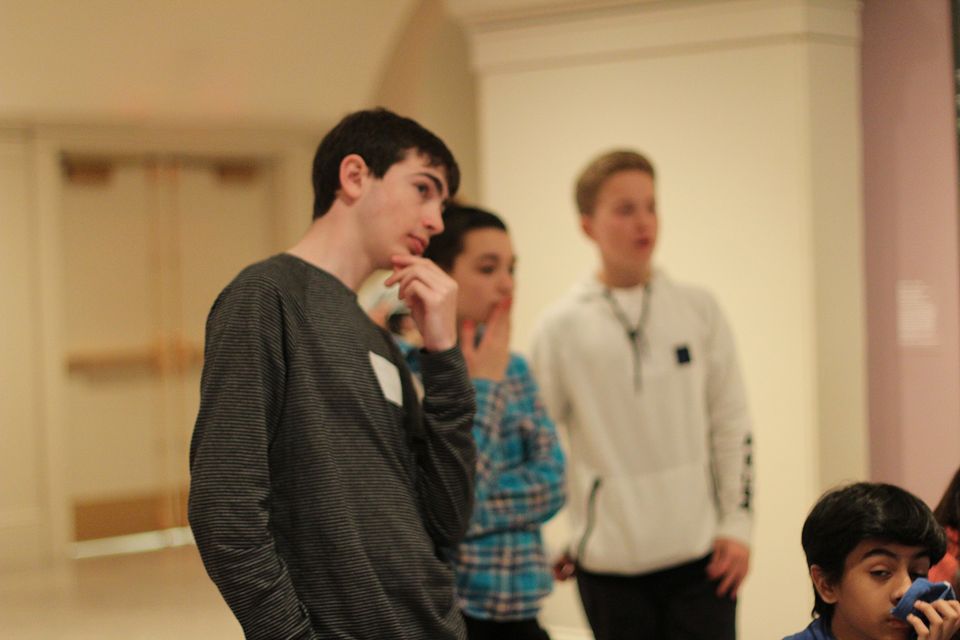
Teaching Moves
Beginning with close looking, students document their observations of an artwork through sketching and writing. Here, the teacher might challenge students to find the most creative or evocative labels to describe elements of the artwork. Students then interpret the artwork based on their observations using a thinking pattern (Claim-Support-Question), which invites students to think about what the artwork means and to provide an explanation for the artwork.
Students may find that their earlier, independent exploration of the artwork has prepared them to receive additional information. Their earlier thinking is likely to provide a useful foundation upon which new information can be layered. This set of experiences, one of them an optional ekphrastic poem, invites students to incorporate new information into their current understanding.
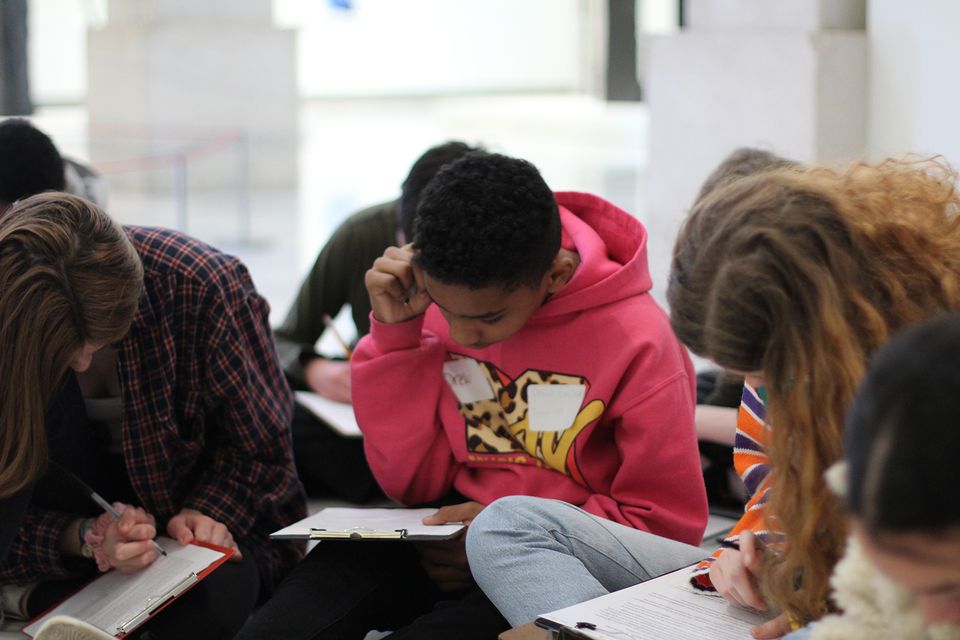
Having captured the keywords and phrases from a text about the artist, students synthesize the information they have learned so far in an ekphrastic poem. Ekphrastic poetry responds to an artwork with vivid descriptions and explanations of deeper meanings. This learning experience challenges students to synthesize earlier steps and distill the meanings gathered from close looking, interpretation, and background text.
Capture the Heart, Connect to the World
This final set of learning experiences invites students to identify big concepts and themes addressed by the artwork. Identifying the big concepts and themes make it possible for students to transfer learning gleaned from the artwork to understanding local, national, and even global issues. Reflecting upon this process will help students to use the pattern of thinking in other areas, including the world around them.

Drawing upon the thinking and documentation from earlier learning experiences, this set of activities begins with students’ reassessment of their earliest interpretations. In light of new information, they are invited to identify the core concept of the artwork using a thinking pattern (I used to think... Now I think...). Students then consider why the core concept matters first to themselves, then to their community, and finally to the world. Students finally reflect on other situations in which getting to the heart of the matter would deepen their understanding of other complex ideas, events, or texts.
<strong data-cart-timer="" role="text"></strong>
- Arts Integration
How Teachers Can Transform Learning in Inclusive Arts-Integrated Classrooms
by Bonny Dieterich, Educator and Author
Inclusion teachers can bolster engagement with arts integration by adapting time, classroom tools, and instructional techniques.
Recommended for educators of grades k-12.
In this resource you'll:
- Explore increasing arts integration in inclusion classrooms
- Learn how teachers can make time for arts integration
- Discover the tools teachers need in arts-integrated classrooms
- Review what instructional techniques should be applied
Introduction
In inclusion classrooms, intentionally designed instruction ensures accessibility for all learners. These spaces, in which students with and without disabilities learn together, value divergent thinking and are built for participation. Teachers search for opportunities to bolster engagement and incorporate best practices to introduce new knowledge and strengthen understanding.

Merging content with the arts can support all levels and types of learning. Adopting an arts-integration approach prompts teachers to implement hands-on activities that develop critical thinking skills, promote collaboration, and embrace multisensory methods. In turn, this approach inspires students to observe, imagine, and construct through authentic experiences. Students meet dual learning objectives when they engage in the creative process to explore connections between an art form and another subject area to gain greater understanding in both (Layne & Silverstein, 2020). As a result, arts integration advances accessibility and equity in classrooms.
Teachers can elevate learning in inclusion classrooms by adapting time, classroom tools, and instructional techniques. These adjustments promote achievement in both the core content area and art form. Shifting to this approach makes learning attainable for all students.
How can teachers make time for arts integration?
Effective instruction requires the preparation of materials, evaluation criteria, and time allocation for every lesson. Inclusion teachers differentiate for learning needs, collaborate with co-teachers, and implement strategies according to Individualized Education Plans (IEPs) and 504 accommodations. Considering the vast array of responsibilities teachers manage each day, the notion to deviate from conventional learning may seem like an obstacle. However, planning to integrate arts with core content is not an additional step; it’s an approach that enhances teacher autonomy and motivates students to apply understanding through personalized, dynamic projects.
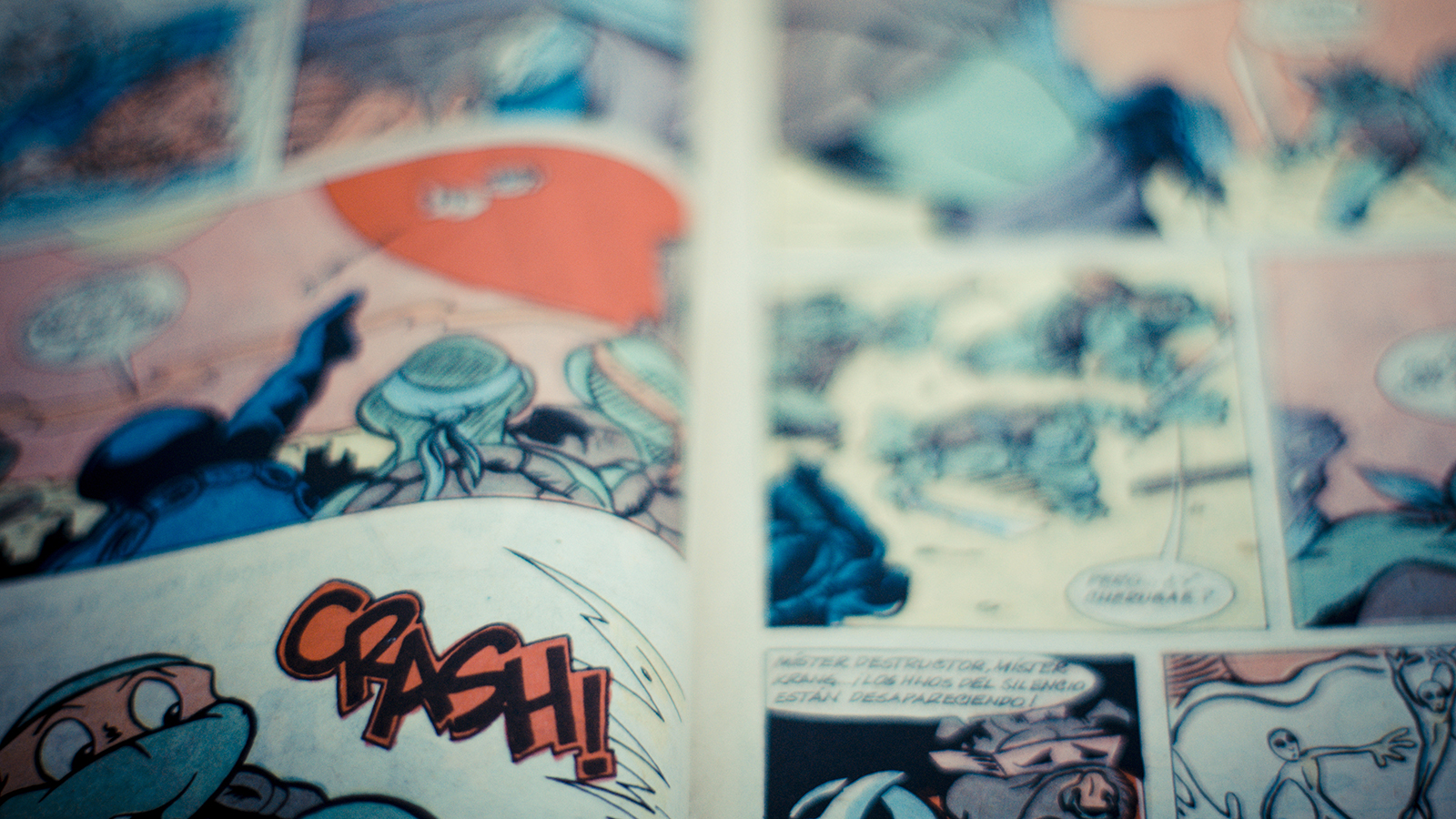
To include art in the learning experience, teachers can begin by engaging “early finishers.” Students who quickly complete assignments benefit from meaningful, open-ended tasks that demonstrate learning in a different way. Creative activities motivate students to apply higher-order thinking through such art forms as visual or performing arts. Learners can mold clay pots , draw a comic strip , invent a game, or tell a story with dance to align with literacy, social studies, and science concepts. In math, students can design tessellations, explore symmetry , or build scenes . Authentic experiences empower learners to accomplish a project and present new opportunities to evaluate learning.
Differentiated instruction requires the development of alternatives to learning barriers. To streamline planning, instructional teams can collaborate to establish criteria for success that meet objectives and activate learning using art forms. By implementing learning menus and flexible workstations, teachers gain opportunities to correct misconceptions and support understanding in real time—allowing them to assess skills during learning, rather than as a separate event. When teachers structure lessons to include student-led discovery, differentiation occurs naturally.
Substituting conventional assignments with opportunities to strengthen thinking and collaboration is also a progressive shift. Teachers can tailor the choices of a project to scaffold according to learning needs and correlate with lesson segments. By exercising choice, students could design a poster to illustrate the timeline of an inventor’s work or role-play a sequence of events. They could take it further by using tools to produce a video to describe the impact of an inventor’s contributions, invent a product of their own, or collaborate with peers to build a new idea. Each of these processes requires content knowledge and unlocks new levels of engagement.
What tools do teachers need in arts-integrated classrooms?
To redesign a learning space for arts integration, teachers can begin with the supplies in their classrooms. Basic items such as crayons, markers, scissors, and glue are not reserved for special projects—they are fundamental elements for problem-solving and constructing new ideas. Clean, recyclable materials, including boxes and cans, generate creativity and provide storage solutions for works in progress. Painting with food and gathering pinecones or leaves suggest new ways to make art using familiar items. Additionally, technology facilitates opportunities to demonstrate learning through media art. In any subject and with every age group, these options bring learning to life.

Inclusion classroom supply orders and wish lists often contain supplemental materials used for accessibility and independence. Items such as adaptive scissors, dot markers, no-spill paint cups, and sponges support fine motor skills. Cushions, mats, and wobble stools introduce flexible seating and provide stability. Slanted surfaces and pencil grips improve positioning for writing and drawing. These tools eliminate barriers by allowing students to participate and express ideas.
In the media arts-integrated lesson, Discovering National Parks , students apply knowledge about national parks to analyze arguments with regard to preserving natural resources. As they collaborate to design an ad campaign to protect the parks, staple classroom supplies are used to produce a vibrant presentation on poster paper. This versatile activity may be adapted to include other art forms, such as a student-created jingle or poem to portray an idea or message. Flexible options encourage independence and communication through creative expression.
Instructional technology and assistive software are also key design tools for accessibility and art exploration. Free programs, such as Google Slides, allow learners to create and present directly from a web browser. Artists can add images, audio, and video to compose an idea, build a storyboard, or sketch a graphic novel. When multiple users contribute to the same presentation, it enables collaboration—and progress is saved automatically. This practical tool is adaptable and appealing to students.

What instructional techniques should be applied?
As teachers develop lessons, opportunities to apply expression and imagination can be adapted to align with learning needs and assessment measures. An arts-integration approach allows both teachers and students flexibility to generate and extend learning beyond traditional handout or keyboard tasks. These methods include collaboration, student choice, and differentiated methods for engagement.

Creative collaboration is a process that builds community and presents opportunities to explore concepts as a shared experience. Teachers decide the scope of the project and which materials to supply. Students exercise flexible thinking skills to generate and design ideas. This collective effort allows teachers to support individual needs of students while modeling routines for learning with art, including procedures for managing materials, working in various classroom spaces, and finishing a project.
Another technique is to offer choices for students to demonstrate understanding in a content area. Teachers determine options such as materials and resources, while students select format. Choices equip learners with the independence to think critically and present knowledge in a manner that best represents their style and skill. When teachers provide this level of personalization, students take the initiative, connecting content with creativity.
In the lesson, Oceans: A Sensory Haiku , there are opportunities for choice and self-expression throughout. Students activate their senses by listening to ocean sounds. During this process they discover sensory words to make art and design a sensory haiku display. Teachers must consider the individual needs of students in order to select materials. These decisions may include size and style of paper, specific art supplies or software, and whether to invite flexible seating for collaboration or improved concentration. Artists have the freedom to select a medium, style, and space in which to work. The sensory haiku lesson demonstrates the partnership between core content, arts, multiple means of engagement, and meeting diverse student needs.
In inclusion classrooms, teachers set the stage for student success. They design lessons to engage learners, develop academic and social-emotional skills, and relate new knowledge to real-world understanding. Shifting current practices to include arts provides opportunities to promote critical thinking and inspire creativity. These enriched experiences reinforce core content and improve achievement. Arts integration provides the foundation for accessible, purposeful learning at all levels.
To explore more K-12 arts integrated lessons, visit the Related Resources section at the bottom of this page or Lesson & Activities from the Digital Learning Resources Library.

Cited Resources
Lesson pottery techniques.
In this 9-12 lesson, students will explore age-old pottery techniques used to construct and decorate burnished coil pots. Students will explore the works of Maria Martinez, Kerry Moosman, and pottery from various cultures and civilizations. Using burnishing techniques, students will create bowls out of clay.
- Visual Arts
- World Cultures
- Grades 9-12
- Sculpture & Ceramics

Lesson Creating Comic Strips
In this 3-5 lesson, students will examine comic strips as a form of fiction and nonfiction communication. Students will create original comic strips to convey mathematical concepts.
- Drawing & Painting
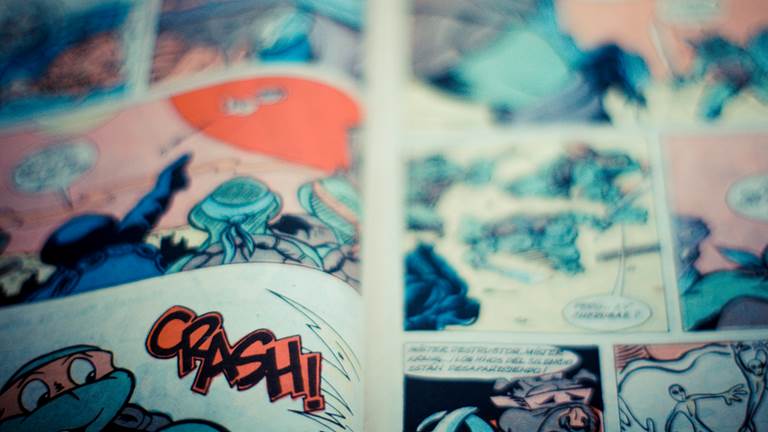
Lesson Storytelling Through Dance
In this grade 3-5 lesson, students will analyze how ballet dancers in The Nutcracker act out the story/character with movement instead of words. Students will emotionally and physically tell a story through dance and pantomime.
- English & Literature
- Musical Theater

Lesson Mandalas, Polygons, and Symmetry
In this 6-8 lesson, students will create mandalas using mathematical concepts and skills. They will explore symmetry as well as the natural and man-made shapes found in mandalas. They will design a mandala, then analyze other students’ creative work for style and message.

Lesson Staging Shakespeare
In this 9-12 lesson, students will explore the nature of comedy by informally staging the opening scenes from William Shakespeare’s play, As You Like It. Students will apply a variety of stylistic approaches to stage scenes from the play, then perform for an audience.
- Shakespeare
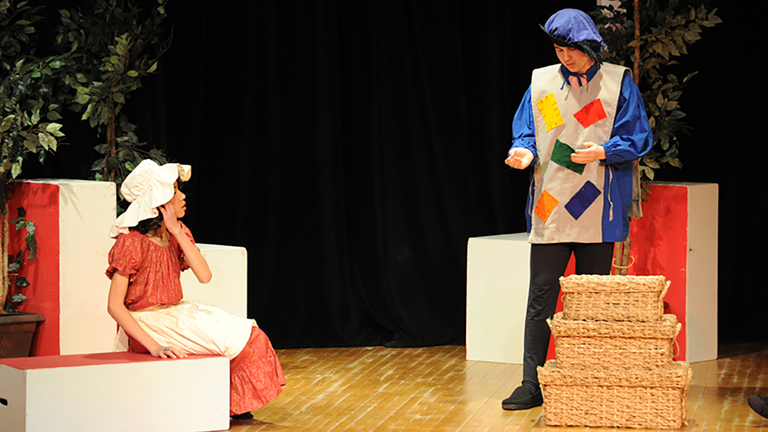
Painting with Food and Spices with Adjoa Burrowes
Learn the art of creating your own paints from items found in your kitchen! In this video, Adjoa Burrowes shows you how you can transform items like spices and food into paints you can use on paper. Once you see Adjoa’s painted papers, you’ll be asking, "What other colors can I create in my kitchen?”

Lesson Discovering National Parks
In this 6-8 lesson, students will create an ad campaign designed to promote America’s national parks. They will learn about the history of America’s national parks and learn about the role that artists played in their creation and maintenance. Students will explore the connection between the arts and environmental/political activism.
- Social Studies & Civics
- Animals & Nature

Lesson Oceans: A Sensory Haiku
In this 3-5 lesson, students will illustrate self-portraits to identify their senses. They will take a virtual field trip to the ocean to explore a sensory experience. Students will write a haiku poem about the ocean, bringing science and creative writing together as one.

Expand Collapse
Layne, S. & Silverstein, L. B. (2020). What is Arts Integration? The Kennedy Center. Retrieved December 1, 2022, from https://www.kennedy-center.org/education/resources-for-educators/classroom-resources/articles-and-how-tos/articles/collections/arts-integration-resources/what-is-arts-integration/
Bonny Dieterich
Copy Editor
Nathaniel Bradley
Presented by
Kennedy Center Education Digital Learning
April 13, 2023
Related Resources
Article what is arts integration.
Explore the Kennedy Center’s comprehensive definition of arts integration

Article Academic Rigor Through Arts Integration
When K-12 teachers integrate arts into specific disciplines they can build creative learning spaces without compromising rigor in a primary content area.

Dance for Every Body with Dancing Wheels
In this video, experience a sample of the Dancing Wheels Company & School’s training methods in physically integrated dance, a method that allows those with and without disabilities to learn and perform dance together. Learning physically integrated dance focuses on translation, the way we make movements between “stand-up” and “sit-down dancers.” Join professional dancers Mary Verdi-Fletcher and Sara Lawrence-Sucato as they demonstrate how to do a brush, a turn, and a jump, offering instruction for a dancer who uses a wheelchair and a dancer who is standing.

Lesson Navajo Weaving
In this K-2 lesson, students will explore Navajo weavings by Navajo Peoples of North America. Students will choreograph a pattern of movements inspired by the weavings. Students will perform and discuss a pattern of movements for an audience.

Lesson A Butterfly’s Life Cycle Dance
In this K-2 lesson, students will choreograph an original dance that communicates the life cycle stages of the monarch butterfly. They will read Eric Carle’s book, The Very Hungry Caterpillar, and explore the monarch butterfly migration process.

Lesson Chinese Calligraphy & Ink Painting
In this 3-5 lesson, students will explore the art and culture of Chinese calligraphy and ink painting. They will learn basic calligraphy strokes and paint traditional landscapes with ink and watercolors.

Lesson Swing Your Partner: The Basics of Square Dancing
In this 3-5 lesson, students will be introduced to the history of square dancing and create a “Kids’ Guide to Square Dancing” media resource. They will learn some basic steps and formations to perform and teach to other children.
- Health & Physical Education

Afro-Peruvian Music and Dance with Marcos Napa
Dance and sing with Afro-Peruvian teaching artist Marcos Napa. Learn basic rhythms that you can play using anything—from a drum to a bucket to your body! Then get moving with Marcos, learning some easy dance steps while developing your Spanish.
- Latin American

Eric Friedman Director, Digital Learning
Kenny Neal Manager, Digital Education Resources
Tiffany A. Bryant Manager, Operations and Audience Engagement
Joanna McKee Program Coordinator, Digital Learning
JoDee Scissors Content Specialist, Digital Learning
Connect with us!
Generous support for educational programs at the Kennedy Center is provided by the U.S. Department of Education. The content of these programs may have been developed under a grant from the U.S. Department of Education but does not necessarily represent the policy of the U.S. Department of Education. You should not assume endorsement by the federal government.
Gifts and grants to educational programs at the Kennedy Center are provided by A. James & Alice B. Clark Foundation; Annenberg Foundation; the Andrew W. Mellon Foundation; Bank of America; Bender Foundation, Inc.; Capital One; Carter and Melissa Cafritz Trust; Carnegie Corporation of New York; DC Commission on the Arts and Humanities; Estée Lauder; Exelon; Flocabulary; Harman Family Foundation; The Hearst Foundations; the Herb Alpert Foundation; the Howard and Geraldine Polinger Family Foundation; William R. Kenan, Jr. Charitable Trust; the Kimsey Endowment; The King-White Family Foundation and Dr. J. Douglas White; Laird Norton Family Foundation; Little Kids Rock; Lois and Richard England Family Foundation; Dr. Gary Mather and Ms. Christina Co Mather; Dr. Gerald and Paula McNichols Foundation; The Morningstar Foundation;
The Morris and Gwendolyn Cafritz Foundation; Music Theatre International; Myra and Leura Younker Endowment Fund; the National Endowment for the Arts; Newman’s Own Foundation; Nordstrom; Park Foundation, Inc.; Paul M. Angell Family Foundation; The Irene Pollin Audience Development and Community Engagement Initiatives; Prince Charitable Trusts; Soundtrap; The Harold and Mimi Steinberg Charitable Trust; Rosemary Kennedy Education Fund; The Embassy of the United Arab Emirates; UnitedHealth Group; The Victory Foundation; The Volgenau Foundation; Volkswagen Group of America; Dennis & Phyllis Washington; and Wells Fargo. Additional support is provided by the National Committee for the Performing Arts.
Social perspectives and language used to describe diverse cultures, identities, experiences, and historical context or significance may have changed since this resource was produced. Kennedy Center Education is committed to reviewing and updating our content to address these changes. If you have specific feedback, recommendations, or concerns, please contact us at [email protected] .
By using this site, you agree to our Privacy Policy and Terms & Conditions which describe our use of cookies.
Reserve Tickets
Review cart.
You have 0 items in your cart.
Your cart is empty.
Keep Exploring Proceed to Cart & Checkout
Donate Today
Support the performing arts with your donation.
To join or renew as a Member, please visit our Membership page .
To make a donation in memory of someone, please visit our Memorial Donation page .
- Custom Other

The Art of Questioning: Techniques to Promote Critical Thinking and Inquiry
We can all agree that critical thinking is an essential skill for students to develop.
This article will provide educators with a comprehensive guide on the art of questioning - powerful techniques to promote critical thinking, inquiry, and deep learning in the classroom.
You'll discover the core principles of effective questioning, actionable strategies to engage different types of learners, as well as sample activities and assessments to put these methods into practice. Equipped with these practical tools, you can transform class discussions that foster students' natural curiosity and grow their capacity for critical thought.
Embracing the Importance of Art of Questioning
The art of questioning is a critical skill for educators to develop. Questioning techniques that promote critical thinking and inquiry-based learning lead to increased student engagement and deeper understanding. By mastering various strategic questioning approaches, teachers can stimulate complex thinking in their students.
Defining the Art of Questioning
The art of questioning refers to the teacher's ability to craft and ask meaningful questions that push students to think more critically. It goes beyond surface-level, fact-based questioning and instead focuses on stimulating analysis, evaluation, creation, connection-making, and reflection. Well-designed questions require students to tap into higher-order cognitive skills and prior knowledge to construct responses. This process mirrors real-world critical thinking and problem-solving.
Benefits of Mastering Questioning Techniques
Teachers skilled in questioning techniques reap many rewards, including:
- Increased student participation and engagement during lessons
- Development of students' critical thinking capacities
- Ability to check students' understanding and identify knowledge gaps
- Scaffolding learning to meet students at their zone of proximal development
- Encouragement of inquiry, sparking student curiosity and motivation to learn
By honing their questioning approach, teachers gain an invaluable tool for promoting deep learning.
The Role of Questioning in Early Childhood Education
Questioning plays a pivotal role in early childhood education by fostering mental activity and communities of practice. Crafting developmentally-appropriate questions allows teachers to gauge children's baseline understanding and then scaffold new concepts. This questioning facilitates theory of mind growth, as children learn to articulate their thought processes. An inquiry-based classroom also encourages participation, inclusive learning, and problem-solving. Ultimately, strategic questioning lays the foundation for critical thinking that will benefit students throughout their education.
What is the art of questioning critical thinking?
The art of questioning refers to the skill of asking thoughtful, open-ended questions that promote critical thinking , inquiry, and deeper learning. As an educator, mastering this art is key to creating an engaging classroom environment where students actively participate.
Here are some best practices around the art of questioning:
Use Open-Ended Questions
Open-ended questions allow students to explain their thought process and help teachers identify gaps in understanding. For example, asking "Why do you think the character made that decision?" lets students share their unique perspectives. Closed-ended questions that just require yes/no answers should be used sparingly.
Ask Follow-Up Questions
Asking follow-up questions based on students' responses shows you are listening and encourages them to expand upon their ideas. Phrases like "Tell me more about..." or "What makes you think that?" stimulate further discussion.
Pause After Posing Questions
Providing wait time of 3-5 seconds after asking a question gives students time to reflect and articulate a thoughtful response, rather than feeling put on the spot.
Scaffold Complex Questions
Break down multi-layered questions into smaller parts to make them more manageable. You can also give students a framework to help organize their thoughts before answering.
Encourage Multiple Perspectives
Prompt students to consider other vantage points by asking, "How might this look from X's perspective?" This builds empathy, critical analysis skills, and more inclusive thinking.
Mastering the art questioning leads to richer class discussions and unlocks students' intellectual curiosity. With practice, you'll be able to stimulate vibrant student-centered dialogue.
What questioning techniques promote critical thinking?
Asking effective questions is a skill that takes practice to develop. Here are some techniques to promote critical thinking through questioning:
Ask questions that require more than a one-word response. This encourages students to explain their reasoning and make connections. For example:
- Why do you think that?
- What evidence supports your conclusion?
- How does this relate to what we learned before?
Dig deeper into student responses by asking them to expand upon their ideas. This helps clarify understanding and uncover misconceptions. Some follow up questions include:
- Can you explain what you mean by that?
- What makes you think that?
- How does that apply to this situation?
Pause After Questions
Provide wait time of 3-5 seconds after posing a question. This gives students time to think and construct an answer, promoting deeper reflection. Resist the urge to rephrase the question or provide the answer yourself.
Scaffold Questions
Break down complex questions into smaller parts to guide student thinking while still encouraging them to do the intellectual work.
Asking thoughtful, open-ended questions takes practice but is essential for developing critical thinking skills . Start by planning 2-3 higher-order questions for each lesson and focus on truly listening to student responses. Over time, a questioning approach focused on explanation, evidence, and exploration will become second nature.
What is the art of questioning method?
The art of questioning is a teaching technique that focuses on asking strategic questions to promote critical thinking, inquiry, and meaningful learning experiences for students. It is an essential skill for educators to master in order to elicit student understanding and uncover gaps in knowledge.
Some key things to know about the art of questioning:
It checks for understanding and gets insight into students' thought processes. By asking probing questions, teachers can determine if students have truly grasped key concepts.
It activates higher-order thinking skills. Well-designed questions require students to analyze, evaluate, and create, moving beyond basic recall.
It sparks student curiosity and engagement. Thought-provoking questions pique interest in lesson topics.
It facilitates rich class discussions. Using quality questioning techniques lays the foundation for impactful dialogue.
It informs teaching strategies and adaptations. Based on student responses, teachers can clarify misconceptions or adjust the pace/complexity of lessons.
Mastering the art of questioning takes practice but is worth the effort. It transforms passive learning into an active, student-centered experience that sticks. Equipped with this vital skill, teachers can maximize critical thinking and inquiry-based learning in their classrooms.
What are the 4 main questioning techniques?
Teachers can utilize four key questioning techniques to promote critical thinking and inquiry in the classroom:
Closed Questions
Closed questions typically require short or one-word answers. They are useful for:
- Checking for understanding
- Getting students to state facts
- Reviewing material
For example, "What year did World War 2 begin?"
Open Questions
Open questions require more elaborate responses. They are effective for:
- Encouraging discussion
- Extracting deeper thinking
- Allowing students to explain concepts
For instance, "How did the Great Depression impact American society?"
Funnel Questions
Funnel questions start broad and become increasingly specific. This technique:
- Prompts recall of contextual details
- Guides students step-by-step
- Focuses thinking
An example is, "What do you know about World War 2? What were the key events leading up to it? What specific decisions by world leaders contributed to its outbreak?"
Probing Questions
Probing questions request clarification or more information. They help to:
- Draw out additional details
- Test the strength of an argument
- Determine accuracy and depth of understanding
For example, "You mentioned the Great Depression caused widespread poverty. Can you expand on the ways it impacted day-to-day life?"
Using a mix of these four questioning techniques can elicit thoughtful participation and allow teachers to effectively gauge comprehension.
sbb-itb-bb2be89
Exploring types of art of questioning.
Art of questioning refers to the teacher's ability to ask thoughtful, open-ended questions that promote critical thinking, inquiry, and engagement among students. Here we explore some key categories of questions that go beyond basic fact recall to stimulate deeper learning.
Open-Ended Questions to Foster Inquiry
Open-ended questions have no single right answer, allowing students to respond creatively within their current knowledge and experiences. Some examples:
- What do you think would happen if...?
- How might we go about solving this problem?
- What are some possible explanations for...?
Guidelines for open-ended questions:
- Ask about hypothetical situations or predictions
- Inquire about students' thought processes or reasoning
- Seek multiple diverse responses to broad issues
Probing Questions to Assess Prior Knowledge
Probing questions aim to uncover and expand upon students' existing knowledge. For instance:
- What do you already know about this topic?
- Can you explain your solution further?
Tips for probing questions:
- Ask students to elaborate or clarify their responses
- Dig deeper into the reasons behind their ideas
- Gauge their current level of understanding on a topic
Hypothetical & Speculative Questions for Mental Activity
Hypothetical and speculative questions require students to mentally engage with imaginative or puzzling scenarios. Examples:
- What do you imagine this character is thinking/feeling?
- If you could travel anywhere, where would you go?
- What might the world look like 100 years from now?
Strategies using speculative questions:
- Present imaginary situations
- Ask about unlikely or fantastical events
- Inquire about hopes, wonders, or puzzles
Synthesis & Evaluation Questions to Enhance Critical Thinking
Higher-order questions push students to analyze, evaluate, and synthesize information. For example:
- How would you compare and contrast these two stories?
- What evidence supports or contradicts this conclusion?
- What changes would you suggest to improve this process?
Techniques for using synthesis questions:
- Ask students to make connections between ideas
- Require them to assess credibility and logical consistency
- Prompt them to create novel solutions based on analysis
Thoughtful questioning is invaluable for engaging students, inspiring deeper thinking, assessing understanding, and taking learning to the next level. Match question types to desired educational outcomes.
Effective Timing and Application of Questioning Techniques
Utilizing zones of proximal development at the beginning of lesson.
At the start of a lesson, it's important to assess students' prior knowledge and understanding within their zones of proximal development. Open-ended questions that require some thought and analysis work well here, such as "What do you already know about this topic?" or "How might this connect to what we learned previously?". Allowing some think time and using gentle probing follow-ups can uncover gaps and misconceptions to address.
During Instruction: Encouraging Active Participation
While teaching new material, questions should regularly check comprehension and spur examination of ideas. "Why" and "how" questions prompt students to articulate concepts in their own words, while think-pair-share structures promote participation. Allow just enough wait time for students to gather thoughts before cold-calling. Ask students to summarize key points or apply them in novel contexts. Maintain an encouraging tone and affirm effort.
End-of-Lesson Evaluations and Inquiry
Conclude by synthesizing main points and addressing lingering questions. Open-ended questions like "What are you still wondering about?" give quieter students a chance to share. Exit tickets, short reflective writing assignments, also stimulate additional inquiry. Follow-up questions based on student responses facilitate rich discussion. Affirm participation and remind students that lingering questions present opportunities for future investigation.
Art of Questioning Activities and Games
Think-pair-share and other participatory activities.
The think-pair-share approach provides an excellent framework for questioning techniques. Students are first asked to independently think about a question or problem. They then discuss their ideas in pairs, encouraging participation from every student before ideas are shared with the whole class. Variations like think-write-pair-share add a writing component for reflection. These participatory structures promote critical thinking and inquiry through peer discussion.
Question Cycles for Continuous Learning Experience
Using a series of interrelated questions on a topic creates continuity in the learning experience. Starting with simpler questions then building up to more complex, higher-order questions logically develops student understanding. Question cycles enable connecting new information to prior knowledge, unpacking ideas, applying concepts, making evaluations, and synthesizing learning. This technique ensures questioning sequentially builds up rather than occurring in isolation.
Socratic Questioning to Challenge Theory of Mind
The Socratic method uses questioning to draw out ideas and uncover assumptions. Teachers can play "devil's advocate" to challenge students' thought processes. This develops theory of mind as students learn to see other perspectives. Socratic questioning teaches the value of intellectual humility and deep thinking. Example questions include "What do you mean when you say...?", "What evidence supports that?", "How does this tie into our earlier discussion?"
Interactive Questioning Games to Engage Students
Games put questioning techniques into action while engaging students. Examples include Quiz-Quiz-Trade with student-created questions, Question Rally with teams answering on whiteboards, Question Cards with written responses, and Question Dice promoting discussion. These games leverage friendly competition and peer involvement to motivate learning through questioning. The interactive format promotes enjoyment, attention, and participation.
Assessing the Objectives and Impact of Questioning Techniques
Developing questioning rubrics aligned with objectives.
Rubrics can be a useful tool for assessing questioning techniques and alignment with learning objectives. When developing a rubric, key aspects to consider include:
- Types of questions asked - Factual, convergent, divergent, evaluative, etc.
- Cognitive level of questions - Remember, understand, apply, analyze, evaluate, create
- Scaffolding and sequencing of questions
- Linkage to lesson objectives and goals
- Student engagement and participation
The rubric can include rating scales or descriptors across these dimensions to evaluate the art of questioning. Teachers can use the rubric for self-assessment or be observed and evaluated by others.
Gathering Insights Through Student Feedback Surveys
Conducting periodic student surveys can provide valuable perceptions into questioning approaches. Useful survey questions may cover:
- Comfort and willingness to respond to questions
- Perceived relevance of questions to learning goals
- Role of questions in promoting thinking and understanding
- Suggestions for improvement
Analyzing survey results over time can indicate whether shifts in questioning techniques have positively influenced the learning experience.
Measuring Growth in Critical Thinking with Assessments
Assessments focused on critical thinking skills can gauge the impact of improved questioning. These may include:
- Essay prompts and open-ended questions
- Scenarios to analyze that require evaluation, synthesis and creative solutions
- Individual or group projects necessitating inquiry and investigation
- Presentations demonstrating deep understanding
Comparing baseline to post-intervention assessments can quantify if questioning strategies have successfully developed critical thinking capacities.
Participatory Action Research for Professional Development
Teachers can engage in participatory action research by:
- Recording lessons and categorizing types/cognitive levels of questions asked
- Soliciting peer or mentor feedback on questioning approaches
- Setting goals for improvement and tracking progress
- Iteratively refining techniques based on evidence and collaboration
This process facilitates continuous growth and allows networking with a community of practice.
Building a Community of Practice Through Questioning
Fostering collaborative environments where educators can share best practices in questioning techniques is key to building a strong community of practice focused on the art of questioning. By creating opportunities for continuous learning and adaptation, educators can work together to advance their skills.
Fostering Collaborative Environments
- Establish routines for educators to observe each other's classrooms and provide feedback on questioning strategies
- Organize professional learning groups for educators to collaborate on developing effective questions
- Create shared online spaces for educators to exchange ideas on the art of questioning
- Promote a growth mindset culture that values inquiry and critical feedback
Sharing Best Practices in Questioning
- Host workshops for educators to demonstrate questioning techniques and activities
- Publish videos/documents highlighting examples of impactful questioning strategies in action
- Maintain forums for educators to post questions and get input from colleagues
- Enable educators to share lesson plans centered around critical thinking questions
- Encourage educators to exchange ideas on adapting questioning for different subjects
Continuous Learning and Adaptation
- Survey educators regularly on evolving needs related to questioning techniques
- Provide ongoing professional development on emerging best practices in questioning
- Establish mentoring programs for new educators to get support in questioning skills
- Promote reflection techniques for educators to assess their questioning methods
- Foster a culture of critical inquiry where questioning practices continuously improve
By taking a collaborative, growth-focused approach to the art of questioning, educators can work together in communities of practice to advance their skills and create vibrant cultures of learning in their classrooms.
Conclusion: Synthesizing the Art of Questioning for Educational Excellence
The art of questioning is a critical skill that all educators should develop. By mastering various techniques that promote critical thinking and inquiry, teachers can stimulate rich discussion, facilitate deeper learning, and empower students to analyze information.
Here are some key takeaways:
Asking open-ended questions is key to sparking curiosity and prompting students to think more critically. Closed-ended questions that have yes/no answers should be used sparingly.
Mix lower and higher-order questions. Lower-order questions assess basic understanding while higher-order questions require evaluation, synthesis and analysis.
Allow adequate wait time between questions. Give students sufficient time to process the question and develop thoughtful responses.
Scaffold complex questions by building on students' prior knowledge. Connect new ideas to concepts already familiar to them.
Encourage participation from all students with inclusive questioning strategies. Consider think-pair-share methods.
Use prompting and probing techniques to extend dialogue. Ask follow-up questions to clarify, provide evidence or expand on initial responses.
By honing expertise in thoughtful inquiry-based questioning, educators can unlock their students' potential for critical thought while creating engaging, student-centered learning environments. Continual development through communities of practice, action research and other forms of professional development can help perfect this invaluable teaching skill.
Related posts
- The Socratic Method: Engaging Students in Critical Thinking and Dialogue
- Teaching Resources for Teachers: Cultivate Critical Thinking
- Cultivating Creativity: Innovative Approaches to Encouraging Student Imagination
- How to Develop Critical Thinking Skills in Students
The Outsiders: Book Review for Teachers

Best Professional Development Books for Teachers: Growing Your Skills

Encouraging Girls to Pursue STEM Careers
Become a buddy..
Join 500+ teachers getting free goodies every week. 📚

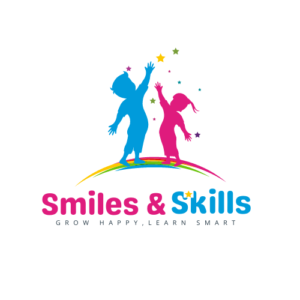
Animals That Start With the Letter L: Discover Rare Finds!
Animals that start with the letter k: discover rare fauna, animals that start with the letter j: discover the jungle’s jewels, animals that start with the letter i: intriguing insights, 7 healthy super juices for babies: boost growth naturally, all about me art activities for preschool: unleash creativity with engaging projects.
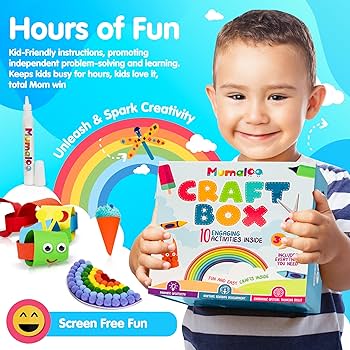
All About Me Art Activities for Preschool is a creative way for young children to express themselves through art. These activities allow preschoolers to explore their identity, emotions, and unique qualities, fostering self-awareness and boosting self-esteem.
Engaging in art activities also enhances fine motor skills, hand-eye coordination, and cognitive development. Preschoolers can create self-portraits, collage family pictures, design name art, and make handprints or footprints with different materials. These hands-on activities encourage self-expression, imagination, and creativity while building a strong sense of self.

Credit: www.gathered.how
In this Article You Will Read
Engaging Preschoolers With Art Activities
Art activities offer a creative and interactive way to engage preschoolers. By encouraging children to explore their imagination and creativity, art activities can foster their cognitive, emotional, and physical development. In this blog post, we will delve into the importance of art in early childhood development and highlight the benefits of ‘All About Me’ themes for engaging preschoolers. Let’s dive in!
Importance Of Art In Early Childhood Development
Art plays a pivotal role in the development of preschoolers. It offers them various ways to express themselves and make sense of the world around them. Here are a few key reasons why art is important:
- Cognitive Development: Art activities stimulate critical thinking skills, problem-solving abilities, and decision-making capabilities in children. By engaging in art, preschoolers learn to observe, analyze, and make connections.
- Emotional Expression: Art provides a safe space for preschoolers to express their emotions and feelings. Through painting, drawing, or sculpting, children can communicate their thoughts and experiences, giving them a sense of emotional release.
- Fine Motor Skills: Art activities require children to use their hands and fingers, thereby enhancing their fine motor skills. These activities, such as cutting, coloring, and using various materials, help develop hand-eye coordination and strengthen muscle control.
Benefits Of ‘all About Me’ Themes
The ‘All About Me’ theme is a wonderful approach to engage preschoolers in art activities. This theme focuses on the child as an individual and encourages self-expression. Here are some benefits of incorporating ‘All About Me’ themes in art:
- Promotes Self-Confidence: ‘All About Me’ art activities empower children to express their unique qualities, interests, and experiences. This sense of self-expression promotes self-confidence and helps preschoolers develop a positive self-identity.
- Encourages Language Development: Through ‘All About Me’ art activities, children can describe and talk about themselves, their family, and their favorite things. This promotes language development and expands their vocabulary.
- Enhances Social Skills: Art activities centered around the ‘All About Me’ theme provide opportunities for preschoolers to share and discuss their artwork with their peers. This fosters social interaction, cooperation, and empathy among children.
Engaging preschoolers with art activities is a wonderful way to promote their holistic development. By incorporating ‘All About Me’ themes, you can create a nurturing environment where children can freely express themselves and explore their unique identities. So, grab those paintbrushes and watch your preschoolers’ creativity soar!
Unique Me Art Projects
Explore a range of engaging and educational art projects that focus on personal expression in preschool-aged children. Discover fun-filled activities that encourage creativity and self-discovery with Unique Me Art Projects.
Self-portrait Creations
Creating self-portraits is an exciting art activity that allows preschoolers to express their unique personalities. From capturing their facial features to showcasing their imagination, self-portrait creations provide a wonderful opportunity for children to explore their individuality. With a few simple materials like paper, pencils, and crayons, children can bring their self-portraits to life. Encourage them to draw themselves with their favorite colors, hairstyles, and outfits, fostering their sense of identity and creativity. By proudly displaying their self-portraits, children can gain a sense of accomplishment and boost their self-esteem.
Handprint Art And Fingerprint Crafts
Handprint art and fingerprint crafts are delightful ways for preschoolers to leave their mark on their artwork. These activities not only encourage sensory exploration but also showcase the uniqueness of each child’s handprints and fingerprints. Using washable paint, children can create colorful handprints on paper, turning them into animals, flowers, or even imaginative creatures. Fingerprints can be transformed into vibrant bugs, flowers, or even a family of aliens. This hands-on activity enables children to develop fine motor skills while embracing their artistic abilities. The resulting artwork makes for great keepsakes or gifts that parents and loved ones will adore.
Custom Name Banners
Custom name banners provide a personalized touch to preschoolers’ art projects. By including their names, children feel a sense of ownership and pride in their creations. The process involves cutting out individual letters from colorful paper or foam and arranging them creatively to form their names. Teachers can encourage children to decorate each letter with stickers, glitter, or drawings that represent their hobbies or interests. Displaying these custom name banners in the classroom or at home serves as a constant reminder of each child’s uniqueness and helps strengthen their emerging literacy skills. It also promotes a sense of belonging and community within the classroom as children appreciate and celebrate each other’s creations.
Incorporating self-portrait creations, handprint art, and fingerprint crafts, and custom name banners into preschool art activities not only engages children but also promotes their self-expression and individuality. These unique art projects foster creativity, fine motor skills, and a sense of identity in young minds. By encouraging children to explore their own ideas and showcasing their artwork proudly, educators and parents can nurture confidence, imagination, and a love for art that will stay with them throughout their lives. So, let the little ones unleash their creativity and discover the wonders of self-expression through these captivating art activities.
Unleashing Creativity
Unleashing creativity is an essential aspect of early childhood development. Through art activities, preschoolers can explore their imagination, experiment with various materials, and express their unique ideas. Engaging in art not only stimulates their creativity but also enhances their fine motor skills, hand-eye coordination, and cognitive abilities. Let’s delve into how you can encourage self-expression through art, choose the right tools and materials, and set up an art-friendly space for your preschoolers.
Encouraging Self-expression Through Art
Art activities provide an excellent platform for preschoolers to embrace their individuality and express themselves freely. By engaging in open-ended art projects, children can communicate their emotions, thoughts, and experiences. Here’s how you can encourage self-expression through art:
- Allow freedom: Give children the freedom to choose their own ideas and materials when creating artwork. This freedom fosters a sense of ownership and creativity.
- Provide open-ended prompts: Instead of giving specific instructions, offer open-ended prompts that encourage children to think critically and explore various possibilities. For example, ask them to create a picture that represents their favorite place.
- Celebrate uniqueness: Encourage children to embrace their unique perspectives and artistic styles. Avoid comparing their artwork to others and emphasize the importance of self-expression.
Tools And Safe Materials For Preschoolers
While allowing preschoolers to explore their creativity, it’s essential to provide them with age-appropriate tools and safe materials. Here are some recommendations:
| Tools | Safe Materials |
|---|---|
By using these tools and materials, you can ensure a safe and enjoyable art experience for your preschoolers.
Setting Up An Art-friendly Space
Creating an art-friendly space is vital for preschoolers to explore their creativity comfortably. Here are some tips for setting up an art space:
- Designate a specific area: Allocate a dedicated space in your home or classroom for art activities. This helps children associate the area with creativity and expression.
- Organize materials: Keep art materials easily accessible and organized. Storage containers, labeled shelves, and clear dividers can make it simpler for children to find and use materials independently.
- Cover surfaces: Protect tables or floors with newspaper or a washable tablecloth, making cleanup easier after messy art sessions.
- Display artwork: Create a designated display area where children can proudly showcase their artwork. This fosters a sense of achievement and motivates them to continue exploring their creative abilities.
- Support independence: Set up a low table and child-sized chairs so that children can comfortably engage in art activities on their own.
Setting up an art-friendly space provides a nurturing environment for preschoolers to unleash their creativity and embark on artistic adventures.
Integrating Learning With Fun
Introducing art activities into preschool education not only ignites creativity but also provides a platform for integrating learning with fun. These activities allow children to explore colors, shapes, and emotions while developing essential skills for their overall growth and development. Let’s dive into some exciting art activities for preschoolers that seamlessly blend learning and fun.
Color Recognition And Mixing
Color recognition is a crucial skill that helps preschoolers identify and differentiate between various hues. Engaging them in art activities such as finger painting, where they can experiment with different colors, not only enhances their motor skills but also promotes color recognition. Encourage children to name and describe the colors they use, opening up a dialogue and reinforcing their understanding of color associations.
Furthermore, introducing color mixing in art activities provides a unique opportunity for preschoolers to learn about primary and secondary colors. Encourage them to combine different primary colors like red, blue, and yellow to create secondary colors such as purple, green, and orange. Watching the transformation of colors firsthand sparks curiosity and helps them develop a deeper understanding of color theory.
Exploring Shapes And Patterns
Art activities provide an excellent platform for preschoolers to explore shapes and patterns, helping them develop spatial awareness and visual discrimination skills. Simple exercises like cutting out various shapes from colored paper and gluing them onto a larger sheet can be both creative and educational. Encourage children to identify the shapes they are using and trace their outlines, reinforcing their knowledge of shapes while fostering their fine motor skills.
Incorporating patterns into art activities is another fantastic way to engage preschoolers in learning through play. Encourage them to create patterns using different art materials like stickers, beads, or stamps. This not only enhances their creativity but also helps them recognize, replicate, and extend patterns, thereby developing their critical thinking and problem-solving skills.
Art And Emotional Intelligence
Art activities play a vital role in nurturing emotional intelligence among preschoolers. Through creative expression, children learn to identify and express their emotions, helping them build resilience and empathy. Encourage them to use art materials like paints, crayons, and clay to express their feelings and emotions.
Engaging in collaborative art activities, such as group paintings or crafting projects, promotes social interaction, cooperation, and communication among preschoolers. This helps them develop their social and emotional skills, fostering a sense of belonging and teamwork.
In conclusion, integrating art activities into preschool education not only enriches children’s creative abilities but also promotes overall development. Through color recognition and mixing, exploring shapes and patterns, and fostering emotional intelligence, preschoolers can engage in enjoyable and meaningful learning experiences that lay the foundation for their future success.
All About Me Art Activities: A Guide
Discover a comprehensive guide to engaging and interactive All About Me art activities designed specifically for preschoolers. Spark their creativity and self-expression in a fun and educational way. Uncover a world of imaginative projects and foster their love for art and self-discovery.
Welcome To The All About Me Art Activities: A Guide
Engaging preschoolers in art activities not only allows them to express their creative side but also helps them develop important skills. All About Me Art Activities are a fantastic way to encourage self-expression, boost self-confidence, and promote fine motor skills. In this guide, we will explore step-by-step project ideas to inspire your little ones’ artistic abilities and adaptable projects for different skill levels.
Step-by-step Project Ideas
Bursting with creativity, these step-by-step project ideas will guide your preschoolers through an exploration of self-portraits, body tracings, and more.
1. Self-Portrait Collage: Start by having your child look at their reflection in a mirror and discuss the features that make them unique. Provide them with a variety of art materials, such as colored paper, markers, and glue. Encourage them to create a collage that represents themselves, using their favorite colors and patterns.
| – Colored paper – Markers – Glue – Scissors |
2. Body Tracing: Lay a large sheet of paper on the floor and ask your child to lie down on it, while you trace their body outline. Hand them crayons, colored pencils, or paint to fill in the tracing, turning their body into a colorful artwork. This activity not only promotes body awareness but also encourages discussion about body parts.
3. My Favorite Things: Provide a blank canvas or a sturdy piece of paper and have your child create a masterpiece that showcases their favorite things. Encourage them to incorporate photographs, drawings, or magazine cut-outs that represent their beloved toys, animals, or hobbies.
Adaptable Projects For Different Skill Levels
Children develop at various paces, and it’s essential to provide art activities that cater to their individual skill levels. Here are a few adaptable projects that can be enjoyed by preschoolers with different abilities:
- Fingerprint Art: For children who are just starting their artistic journey, fingerprint art is a perfect introduction. Offer washable ink pads and let them experiment with creating different patterns and shapes using their fingerprints. It’s a fantastic way to improve hand-eye coordination and explore color recognition.
- Collaborative Art: For children who thrive in social settings, collaborative art projects can be a wonderful opportunity. Set up a large piece of paper or canvas and invite multiple children to work together on a single masterpiece. This activity teaches teamwork, communication, and compromise while creating a beautiful piece of art.
- Mixed Media Art: Children with more advanced art skills can explore mixed media art projects. Provide a variety of art materials, such as paint, pastels, yarn, buttons, and fabric, and encourage them to experiment with different textures and techniques. This adaptable project allows children to showcase their creativity and explore new artistic possibilities.
No matter their skill level, these adaptable projects will surely inspire your preschoolers to let their imaginations soar and create unique works of art.
Showcasing Art And Celebrating Individuality
Discover the beauty of individual expression with All About Me Art activities for preschoolers. Unleash their creativity and showcase their unique personalities through engaging art projects. Let their imagination soar as they explore different mediums and celebrate their one-of-a-kind artistic talents.
Creating A Classroom Art Gallery
One of the most effective ways to showcase art and celebrate individuality in a preschool setting is by creating a classroom art gallery. This not only encourages creativity among the little artists but also provides them with a platform to proudly display their masterpieces. With a dedicated space in the classroom adorned with colorful frames and catchy labels, the art gallery becomes a visual celebration of each child’s unique talents and imagination.
By curating an art gallery, teachers can instill a sense of pride and accomplishment in the young artists, boosting their self-esteem and fostering a love for artistic expression. Whether it’s a scribbled masterpiece or a meticulously drawn picture, every artwork has its place in the gallery, creating an inclusive atmosphere that values and appreciates individuality.
Art Sharing Sessions With Peers And Parents
In addition to creating a classroom art gallery, holding art sharing sessions with peers and parents further enhances the celebration of individuality. These sessions provide an opportunity for children to talk about their artwork, share their inspiration, and engage in meaningful conversations with their classmates and loved ones.
During these sessions, children can take turns presenting their artwork, explaining their creative process, and discussing the emotions or ideas behind their pieces. This not only promotes effective communication but also encourages children to appreciate and respect each other’s artistic abilities. It fosters a sense of community and collaboration, where every child’s unique artwork is valued, celebrated, and understood.
Reflecting On The Art-making Experience
Engaging children in reflections on their art-making experience is an essential component of showcasing art and celebrating individuality. By prompting children to think about their creative journey, teachers can help them develop a deeper understanding of their own artistic style, preferences, and strengths.
Through open-ended questions and discussions, teachers can encourage children to express their thoughts, feelings, and experiences related to their artwork. This reflection process allows children to gain insights into their own creativity, enabling them to recognize and appreciate their unique artistic voice.
In addition to self-reflection, teachers can also facilitate group discussions where children can provide feedback and positive critique on each other’s artwork. This promotes constructive criticism and helps children understand and appreciate the diverse artistic approaches of their peers, promoting a culture of respect and admiration for individuality in the artistic realm.
Frequently Asked Questions For All About Me Art Activities For Preschool
What are some easy and fun art activities for preschoolers.
Some easy and fun art activities for preschoolers include finger painting, collage making with cut-out shapes and colored paper, and creating handprint or footprint art. These activities allow children to explore different textures and colors while enhancing their fine motor skills and creativity.
How Can Art Activities Benefit Preschoolers?
Art activities can benefit preschoolers in various ways. They stimulate their imagination and creativity, enhance their fine motor skills and hand-eye coordination, and promote self-expression and confidence. Art also provides opportunities for sensory exploration and encourages problem-solving and critical thinking skills.
Can Art Activities Help Preschoolers Develop Their Social Skills?
Yes, art activities can help preschoolers develop their social skills. When children engage in art projects together, they learn to share materials, take turns, and cooperate with their peers. Art also provides a platform for communication, self-expression, and collaboration, fostering social interactions and building relationships among preschoolers.
Preschoolers love engaging in art activities that allow them to freely express themselves while learning about themselves. These All About Me art activities are not only fun but also educational. From creating self-portraits to making body tracings, these activities promote self-awareness and imagination.
By incorporating art into the curriculum, children develop fine motor skills, enhance their creativity, and boost their self-confidence. These activities also provide an excellent opportunity for teachers and parents to engage in meaningful conversations with preschoolers about their likes, dislikes, and unique qualities.
So, let your little ones explore their creativity and showcase their individuality through these exciting art projects.
RELATED ARTICLES MORE FROM AUTHOR
Top 10 animation movies for preschoolers: fun and educational picks, new year activities for preschool: fun and educational ideas, letter c activities for preschool: creative crafts and colorful games, leave a reply cancel reply.
Save my name, email, and website in this browser for the next time I comment.
Recent Posts
Animals that start with the letter t, 6 best happy birthday poems for little brother, preschool learning: list of animals that starts with the letter d, sensory preschool activities, animals that start with the letter z, follow us on instagram @smilesandskills.
Critical thinking definition

Critical thinking, as described by Oxford Languages, is the objective analysis and evaluation of an issue in order to form a judgement.
Active and skillful approach, evaluation, assessment, synthesis, and/or evaluation of information obtained from, or made by, observation, knowledge, reflection, acumen or conversation, as a guide to belief and action, requires the critical thinking process, which is why it's often used in education and academics.
Some even may view it as a backbone of modern thought.
However, it's a skill, and skills must be trained and encouraged to be used at its full potential.
People turn up to various approaches in improving their critical thinking, like:
- Developing technical and problem-solving skills
- Engaging in more active listening
- Actively questioning their assumptions and beliefs
- Seeking out more diversity of thought
- Opening up their curiosity in an intellectual way etc.
Is critical thinking useful in writing?
Critical thinking can help in planning your paper and making it more concise, but it's not obvious at first. We carefully pinpointed some the questions you should ask yourself when boosting critical thinking in writing:
- What information should be included?
- Which information resources should the author look to?
- What degree of technical knowledge should the report assume its audience has?
- What is the most effective way to show information?
- How should the report be organized?
- How should it be designed?
- What tone and level of language difficulty should the document have?
Usage of critical thinking comes down not only to the outline of your paper, it also begs the question: How can we use critical thinking solving problems in our writing's topic?
Let's say, you have a Powerpoint on how critical thinking can reduce poverty in the United States. You'll primarily have to define critical thinking for the viewers, as well as use a lot of critical thinking questions and synonyms to get them to be familiar with your methods and start the thinking process behind it.
Are there any services that can help me use more critical thinking?
We understand that it's difficult to learn how to use critical thinking more effectively in just one article, but our service is here to help.
We are a team specializing in writing essays and other assignments for college students and all other types of customers who need a helping hand in its making. We cover a great range of topics, offer perfect quality work, always deliver on time and aim to leave our customers completely satisfied with what they ordered.
The ordering process is fully online, and it goes as follows:
- Select the topic and the deadline of your essay.
- Provide us with any details, requirements, statements that should be emphasized or particular parts of the essay writing process you struggle with.
- Leave the email address, where your completed order will be sent to.
- Select your prefered payment type, sit back and relax!
With lots of experience on the market, professionally degreed essay writers , online 24/7 customer support and incredibly low prices, you won't find a service offering a better deal than ours.

IMAGES
VIDEO
COMMENTS
The artworks begged understanding. Using thinking patterns to understand and appreciate the artworks could offer students vital lessons to learn about critical thinking. If thinking about their thinking (metacognition) could be part of this experience, then the students might, in addition, transfer these thinking patterns across subject areas ...
Teaching Critical Thinking through Art, 4.2: Going Deeper with Creative Questions. In this lesson demonstration video filmed at the National Gallery of Art, a group of teachers from District of Columbia Public Schools use two routines, Looking: 5 x 2 and Creative Questions, to explore a contemporary, abstract work of art, Synecdoche by Byron Kim.
Thought-Provoking Art. Five ways to jump start creative thinking. Start it up! There's no need to divide critical thinking from creativity. The two easily meld into classroom activities with art as the starting point. 1. Activate knowledge with art. Have students express what they already know in the form of an art project.
The beauty of this activity is that just by participating, students are developing critical thinking skills. The NEA has a helpful document available for download called "An Educator's Guide to the 'Four Cs'" which details how part of critical thinking is making judgments and decisions. Specifically, students should develop skills to ...
Art education fosters critical thinking by encouraging children to observe, interpret, and reflect on art. This process can enhance their attention to detail, an essential aspect of critical thinking. Moreover, art education often involves problem-solving tasks, which can further promote critical thinking. 3.
And critical thinking provides the tools for this process. So yeah, it's safe to say that critical thinking definitely matters. Learning Critical Thinking with an Arts Integration Education. Arts integration education merges the important skill of critical thinking achieved through art education and blends it in with academics.
Teachers, your mission is finding ways to integrate art into the core subjects. Use your students' creative impulses to bring a new purpose to interpreting, conceptualizing and critically thinking around content. This type of integration can work for ANY discipline. It will help to value art as not just a separate entity, but rather integral to ...
Overview. Artful Thinking helps teachers use works of visual art and music in ways that strengthen student thinking and learning in the arts and beyond. The goals of this program are to help teachers create connections between works of art and the curriculum, and to help teachers use art as a force for developing students' thinking dispositions.
Washington, DC—The Gallery's first-ever Massive Open Online Course (MOOC) for educators of all grade levels, subjects, and locations is open for enrollment. Featuring a variety of demonstration videos and interactive tools, this five-unit course prepares teachers to incorporate works of art into classroom practices with Artful Thinking routines—critical thinking strategies developed by ...
Teaching Critical Thinking through Art with the National Gallery of Art. Based on the National Gallery of Art's popular Art Around the Corner professional development program for teachers in Washington, D.C., this five-part, self-paced online course provides everything you need to begin creating a culture of critical thinking and collaboration for any classroom, subject, or level.
Here are a few examples of how I use art: 1. Nighthawks by Hopper. Nighthawks by Hopper is analyzed to introduce the modern period. I give students time on their own to study the painting analyzing color, lines, and shapes and then use this discussion to determine mood and tone. If time allows, students write dialogue between the characters.
Here's a list of specific strategies and activities you can use support making thinking visible in the classroom (click on each for more details): Use Artful Thinking Routines. Try Close Reading of an Art Composition. Connect with Cooperative Poetry. Explore Ekphrasis Poetry for Vivid Language.
This article examines whether exposure to the arts has an effect on the ability of students to engage in critical thinking. We conduct a randomized controlled trial involving 3,811 students who were assigned by lottery to participate in a School Visit Program at the newly opened Crystal Bridges Museum of American Art.
Pablo Picasso’s is an excellent example to show how art has the power to make us better people. The importance of combining art and critical thinking skills, in a myriad of formal and informal approaches, can prove very effective in improving the quality of life for individuals and societies. This article discusses how the creative/ artistic mind, in tandem with the problem-solving ...
6. Start a Debate. In this activity, the teacher can act as a facilitator and spark an interesting conversation in the class on any given topic. Give a small introductory speech on an open-ended topic. The topic can be related to current affairs, technological development or a new discovery in the field of science.
Art activities stimulate the brain in ways that other educational activities can not, providing opportunities for problem solving, critical thinking, and creative exploration. Studies have shown that engaging in art activities can help children learn to think outside the box, form new associations and ideas, and even develop fine motor skills.
3. Impact of art education on critical thinking skills 3.1 Definition of critical thinking skills Art education has long been recognized as a valuable component of a well-rounded education. It provides students with opportunities to express themselves creatively, develop their imagination, and explore different forms of communication.
Mon - Sun: 10:00 am‑5:30 pm. How can learners uncover the organizing concepts present in classroom content and the wider world? Explore this essential question and reinforce critical thinking with this classroom-test, 70-minute arts integration unit for students in grades 6-12. Includes teaching protocol, artwork, and student packet.
1×5 Creative Thinking Strategy. The 1×5 strategy is a creative thinking activity that provides 1 object or idea and has students alter it 1 time for 5 rotations. So, you could move students into groups of 5 and provide each group with an object or an idea. Each person in the group must add or change one thing about the object or idea.
Adopting an arts-integration approach prompts teachers to implement hands-on activities that develop critical thinking skills, promote collaboration, and embrace multisensory methods. In turn, this approach inspires students to observe, imagine, and construct through authentic experiences.
The art of questioning is a critical skill for educators to develop. Questioning techniques that promote critical thinking and inquiry-based learning lead to increased student engagement and deeper understanding. By mastering various strategic questioning approaches, teachers can stimulate complex thinking in their students.
Cognitive Development: Art activities stimulate critical thinking skills, problem-solving abilities, and decision-making capabilities in children. By engaging in art, preschoolers learn to observe, analyze, and make connections. ... Engaging preschoolers with art activities is a wonderful way to promote their holistic development. By ...
Critical thinking, as described by Oxford Languages, is the objective analysis and evaluation of an issue in order to form a judgement. Active and skillful approach, evaluation, assessment, synthesis, and/or evaluation of information obtained from, or made by, observation, knowledge, reflection, acumen or conversation, as a guide to belief and action, requires the critical thinking process ...